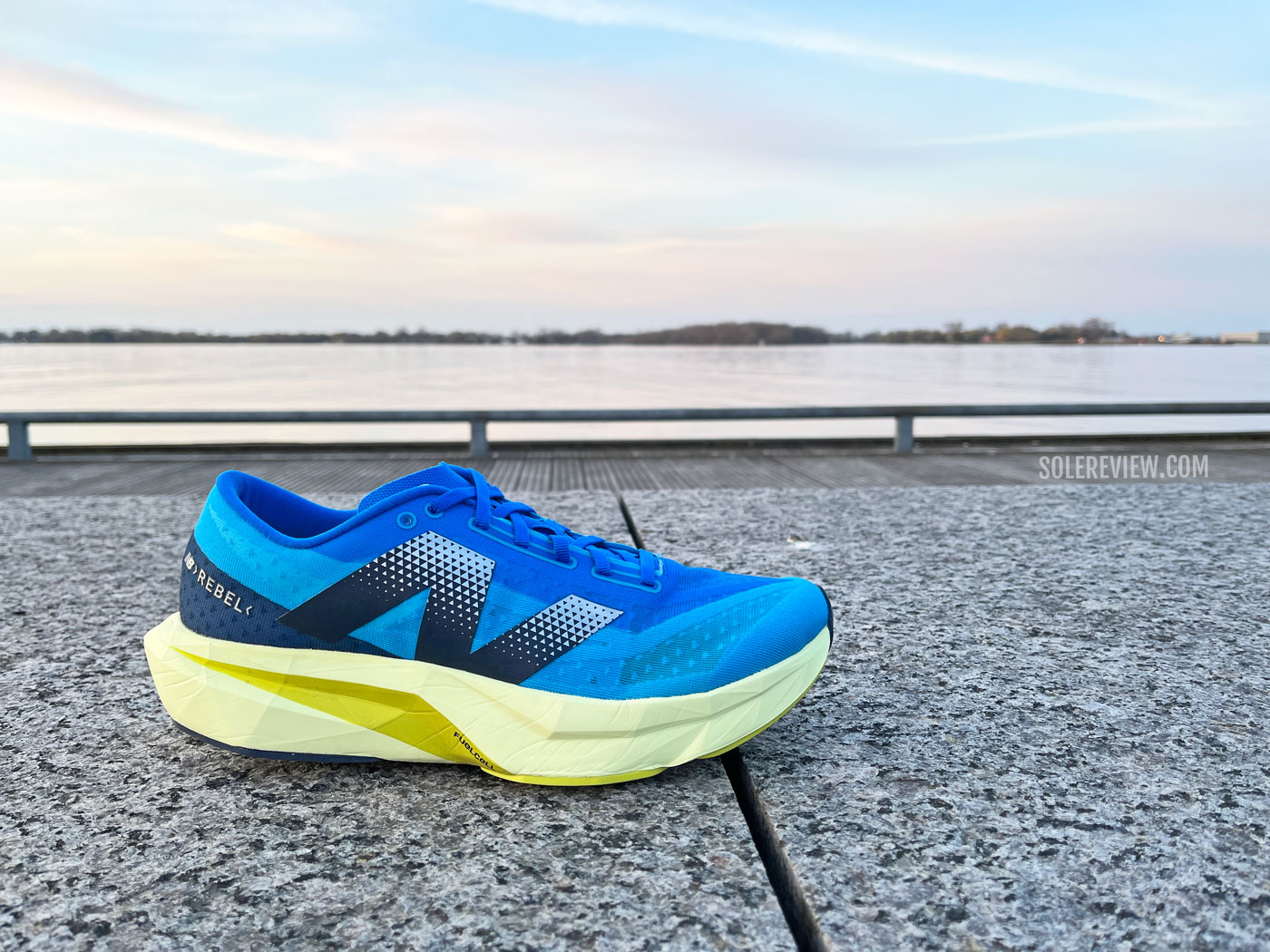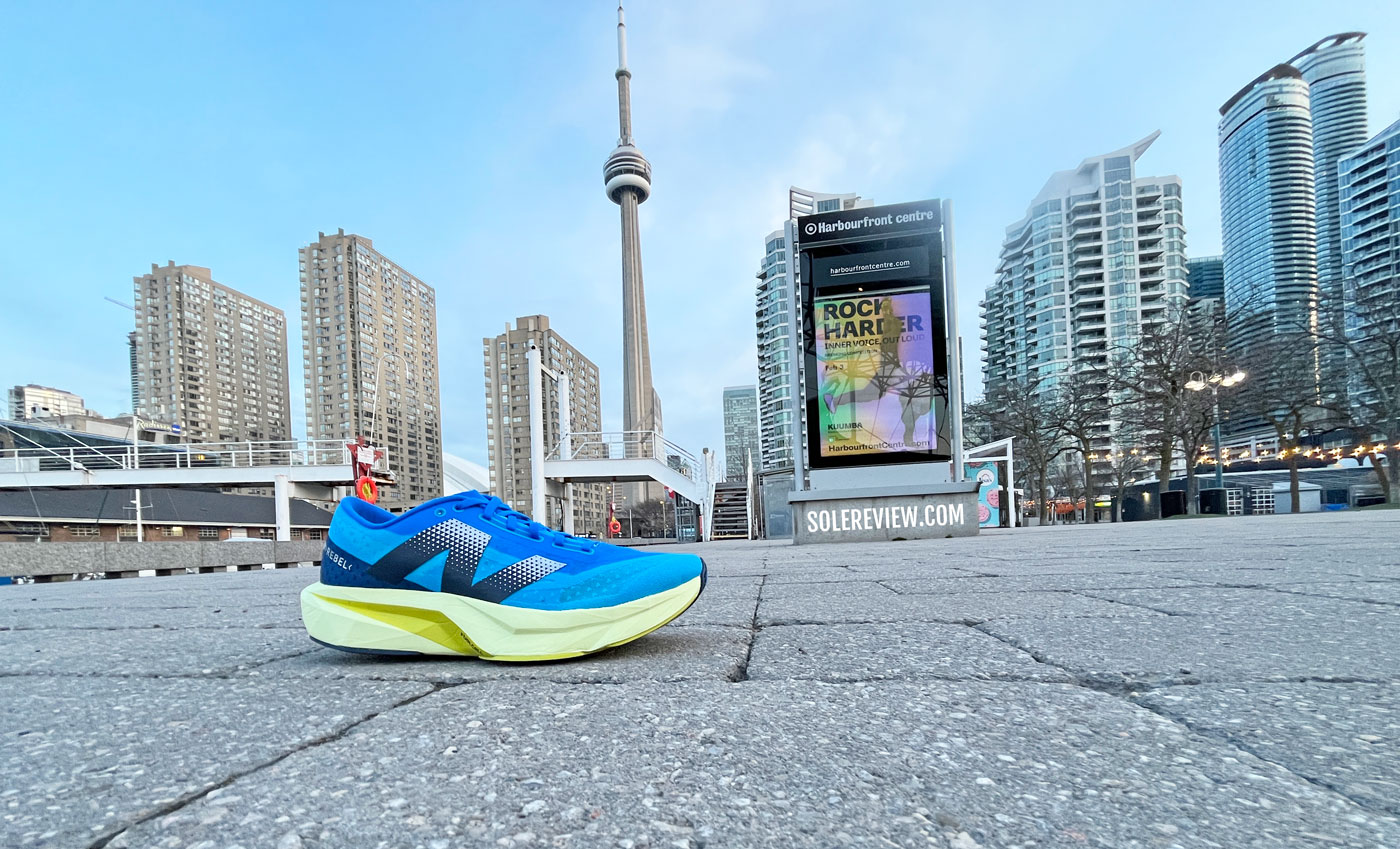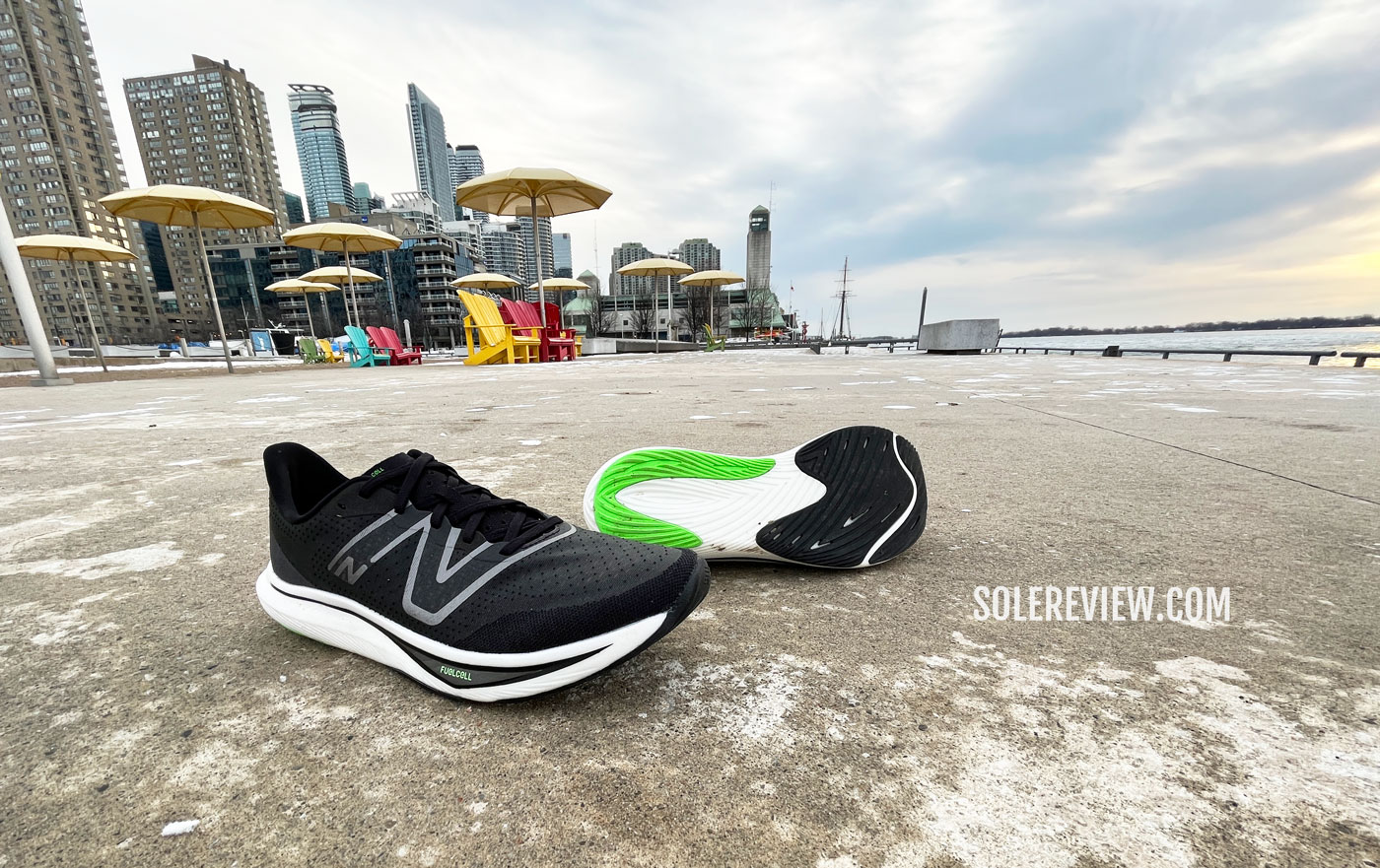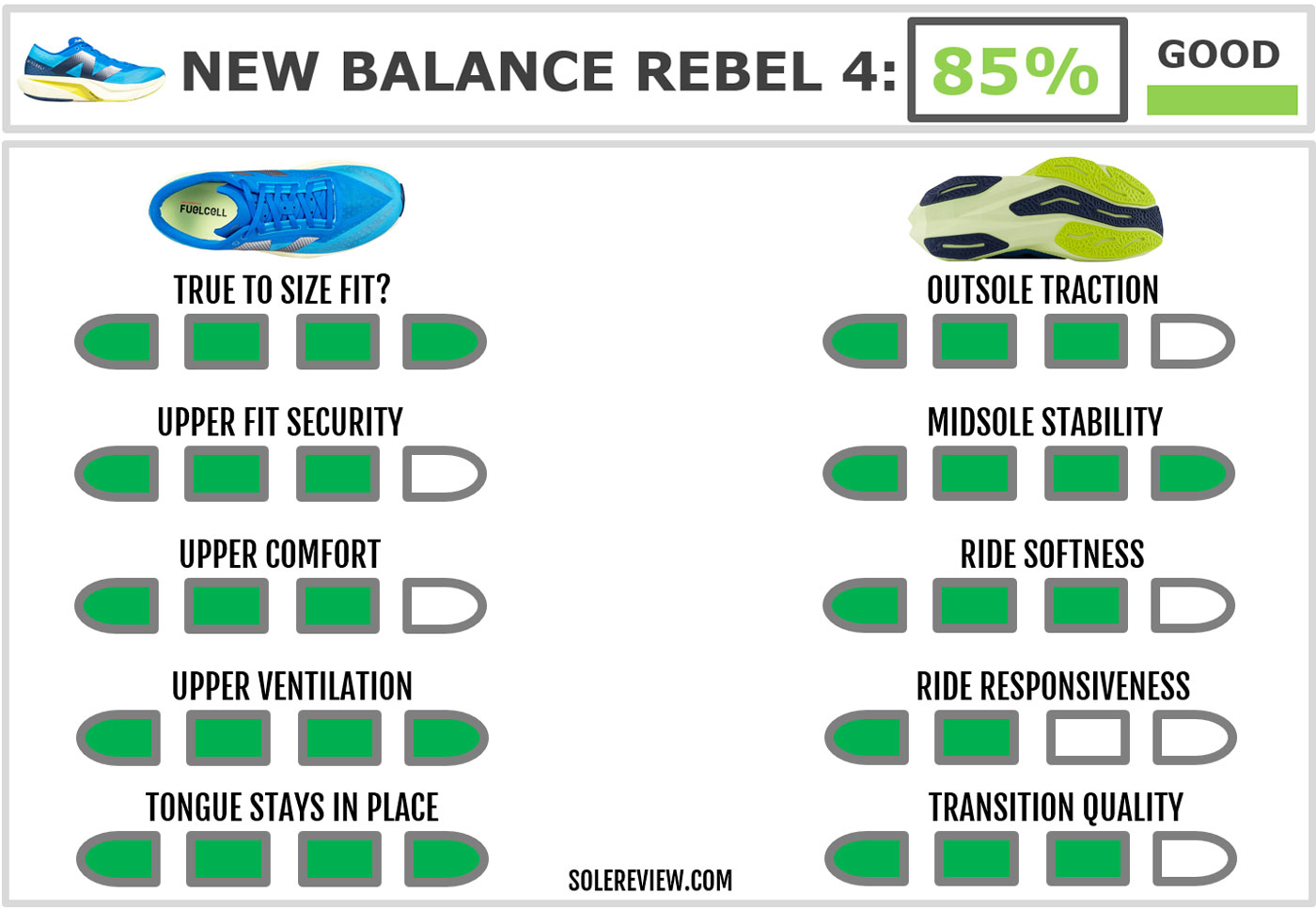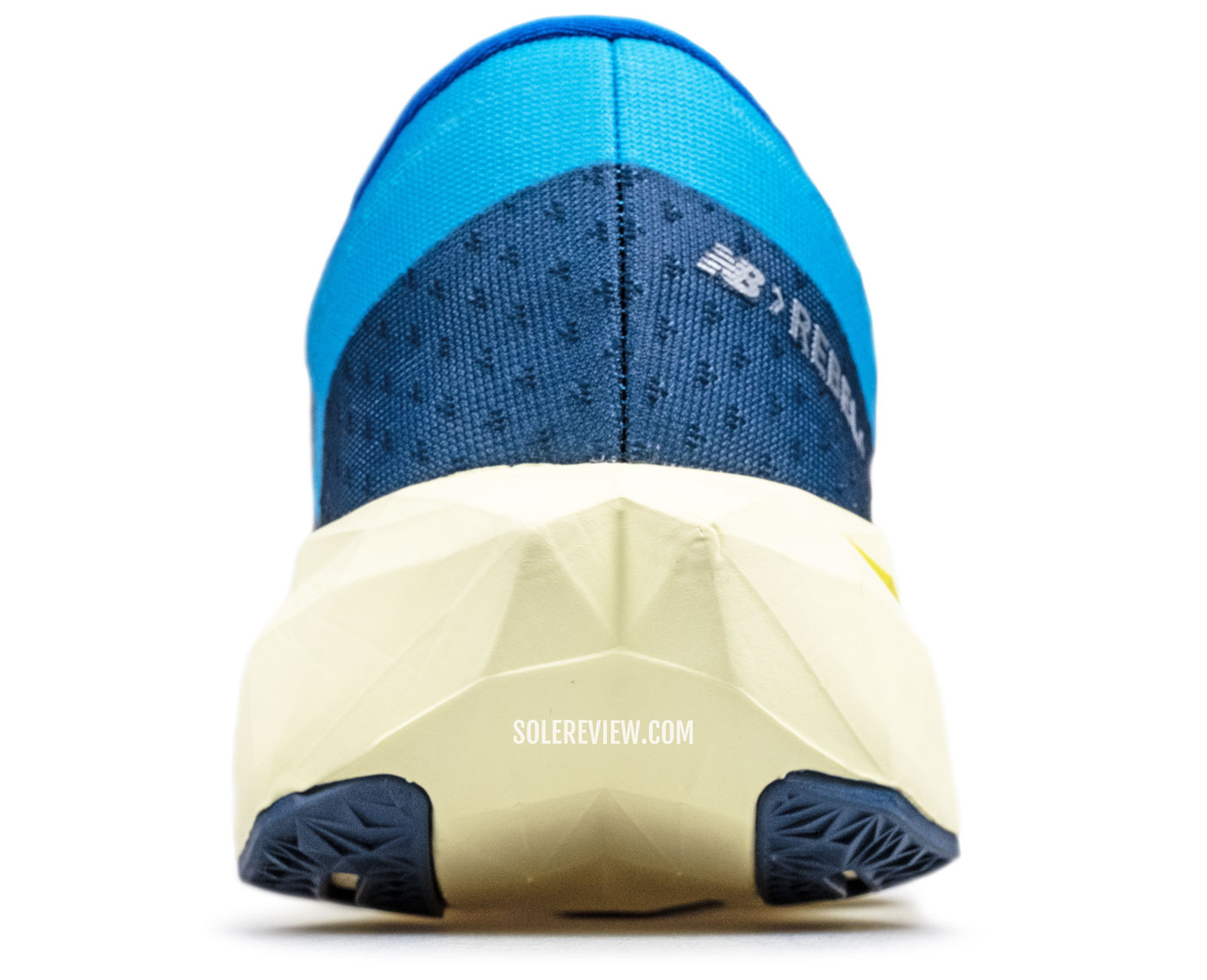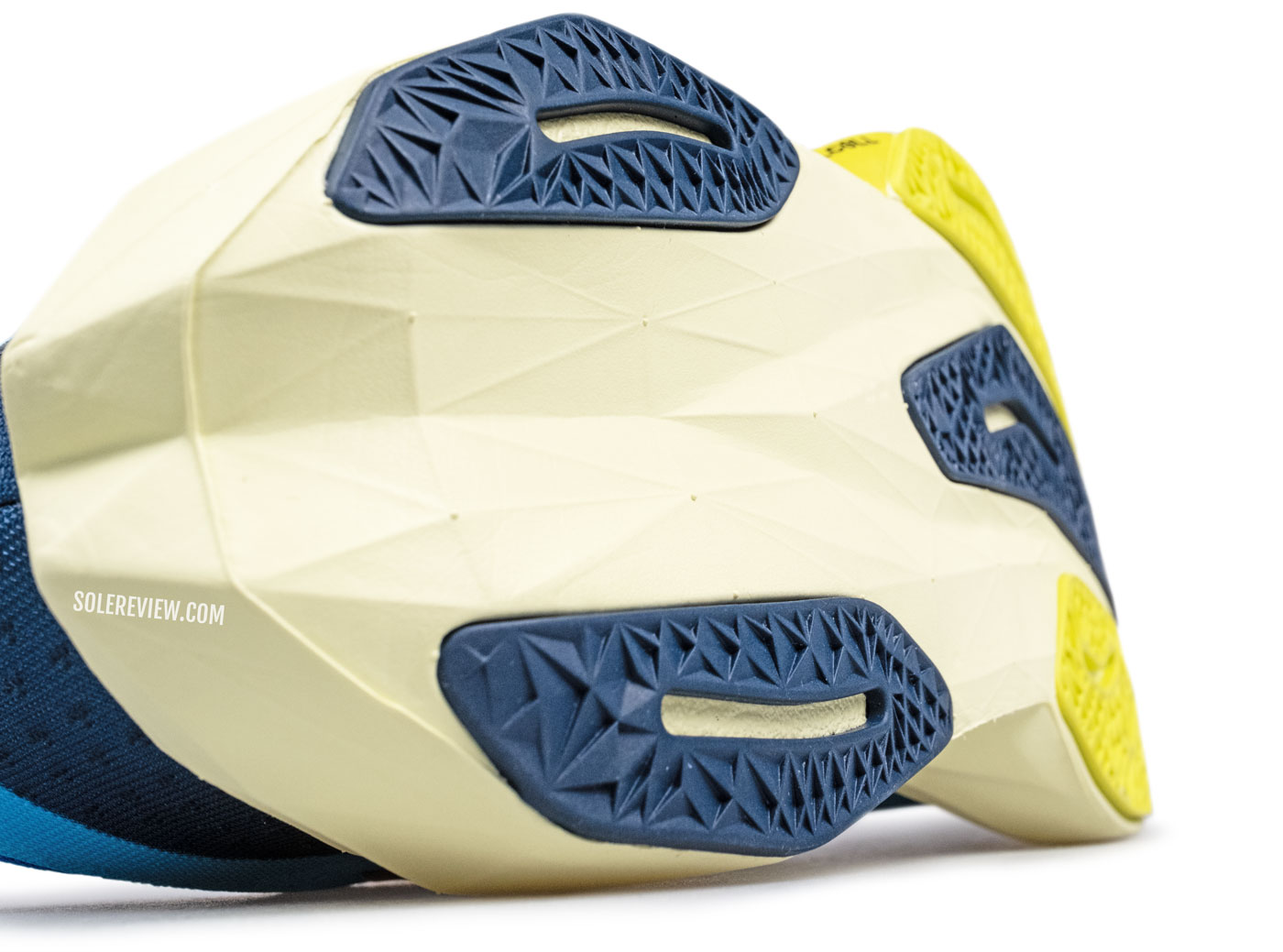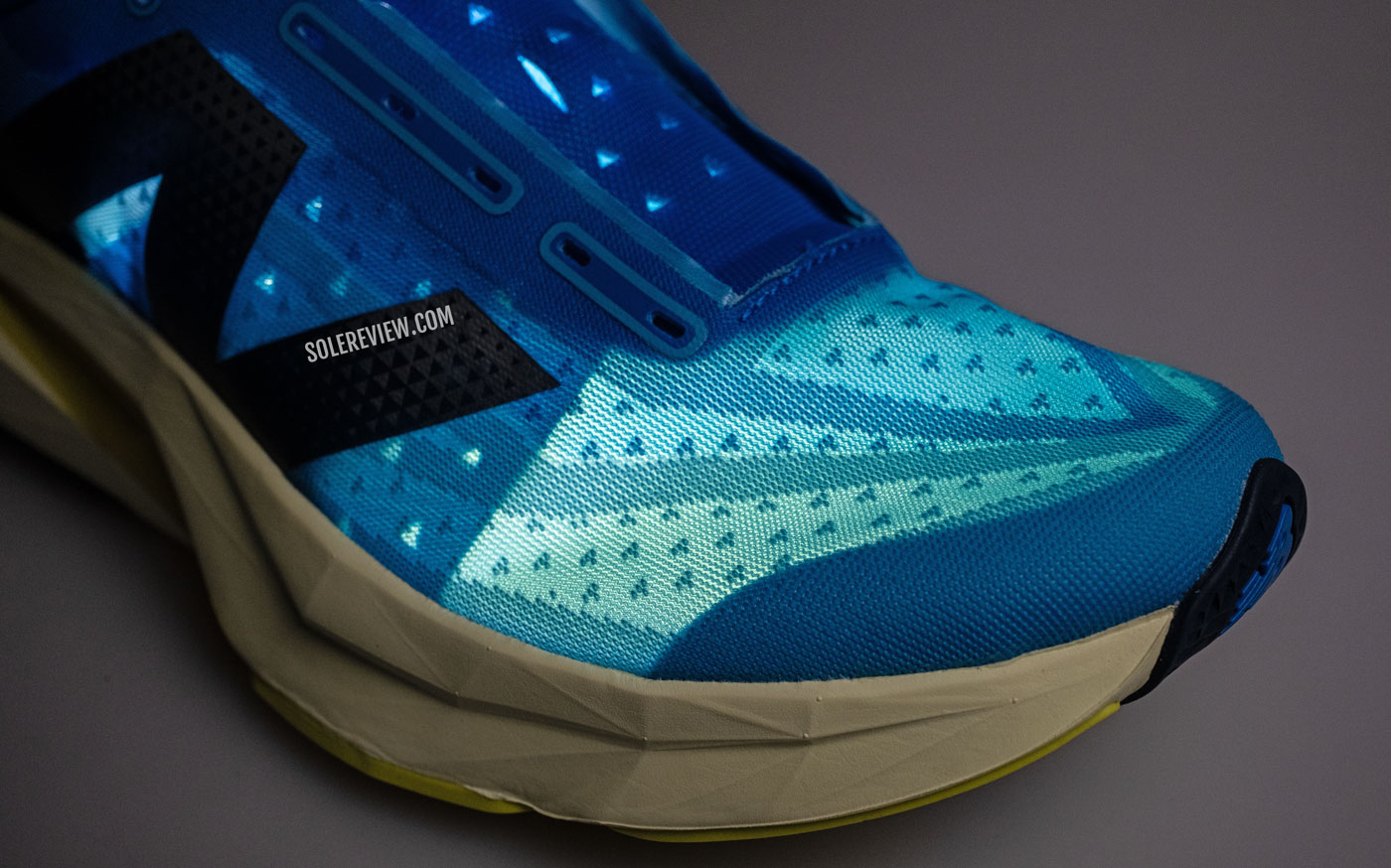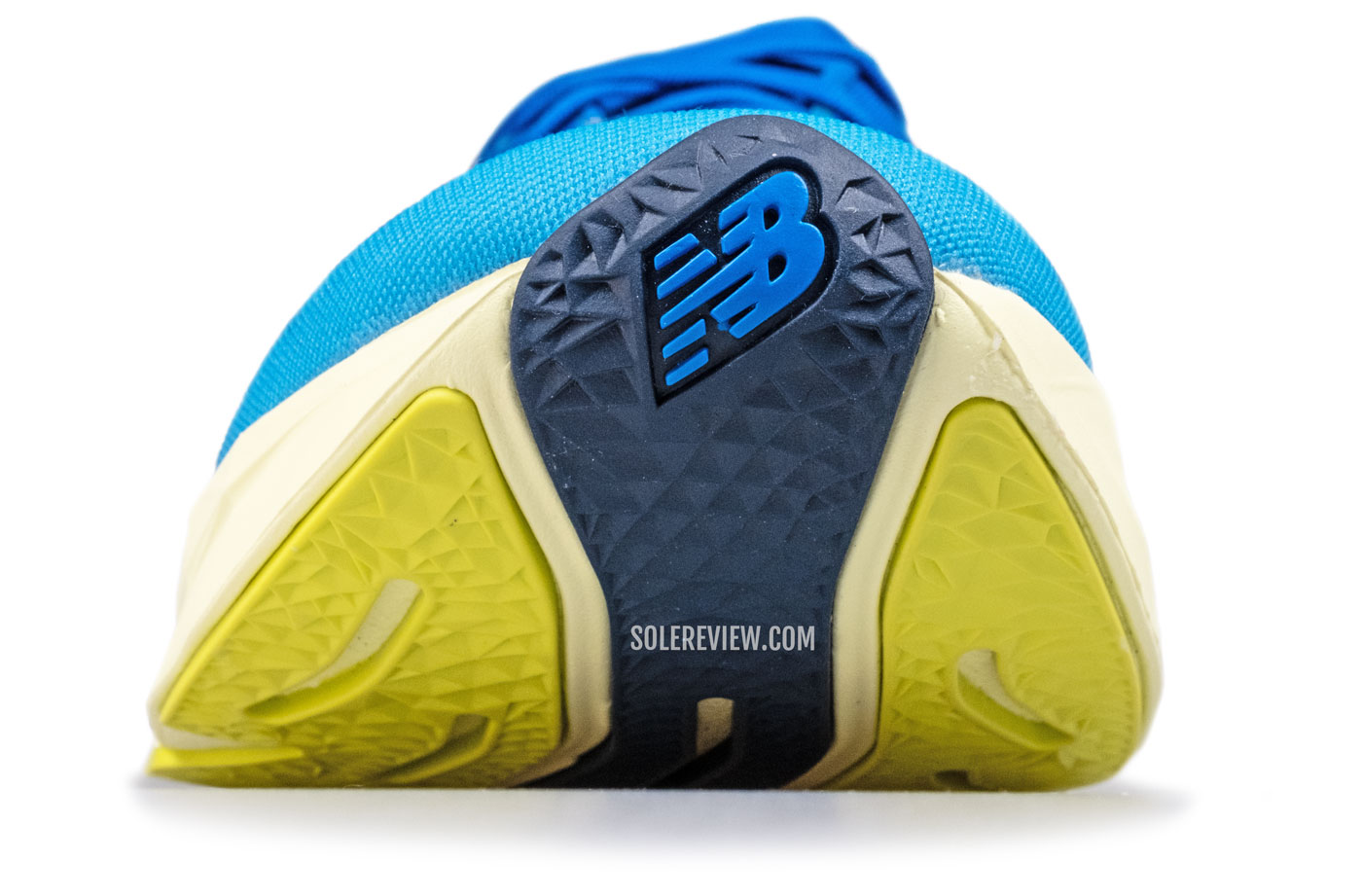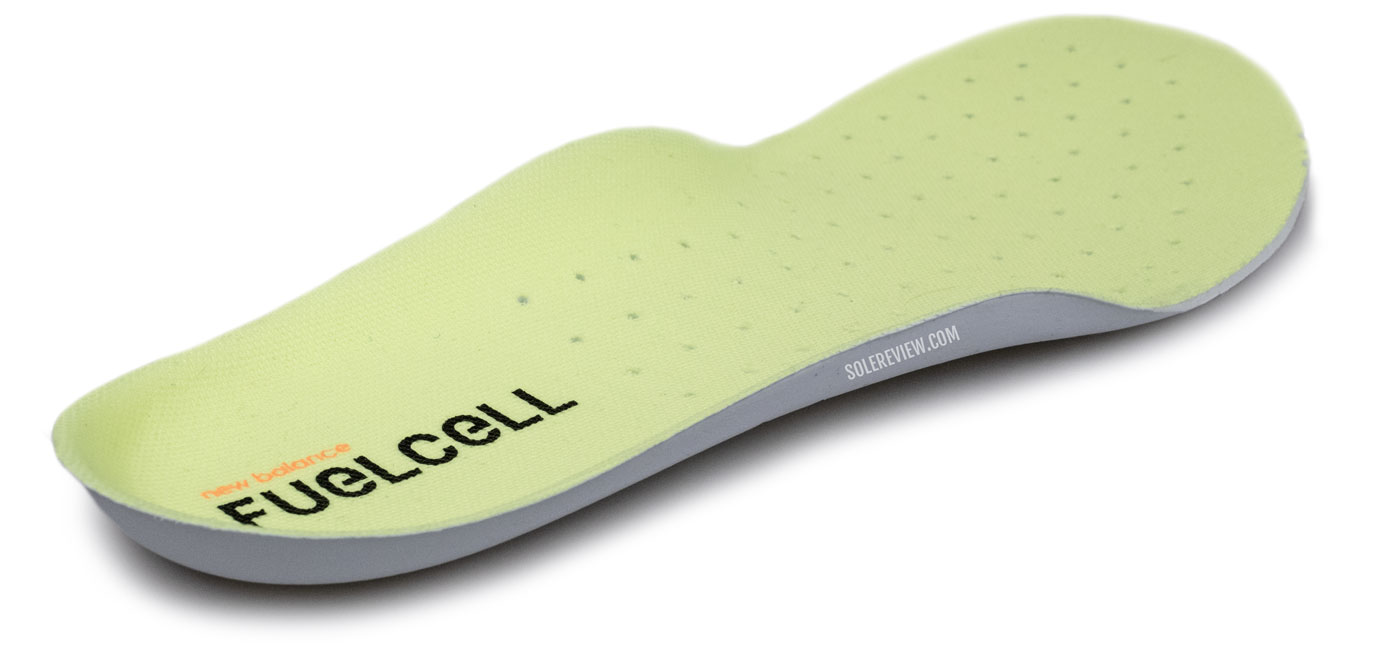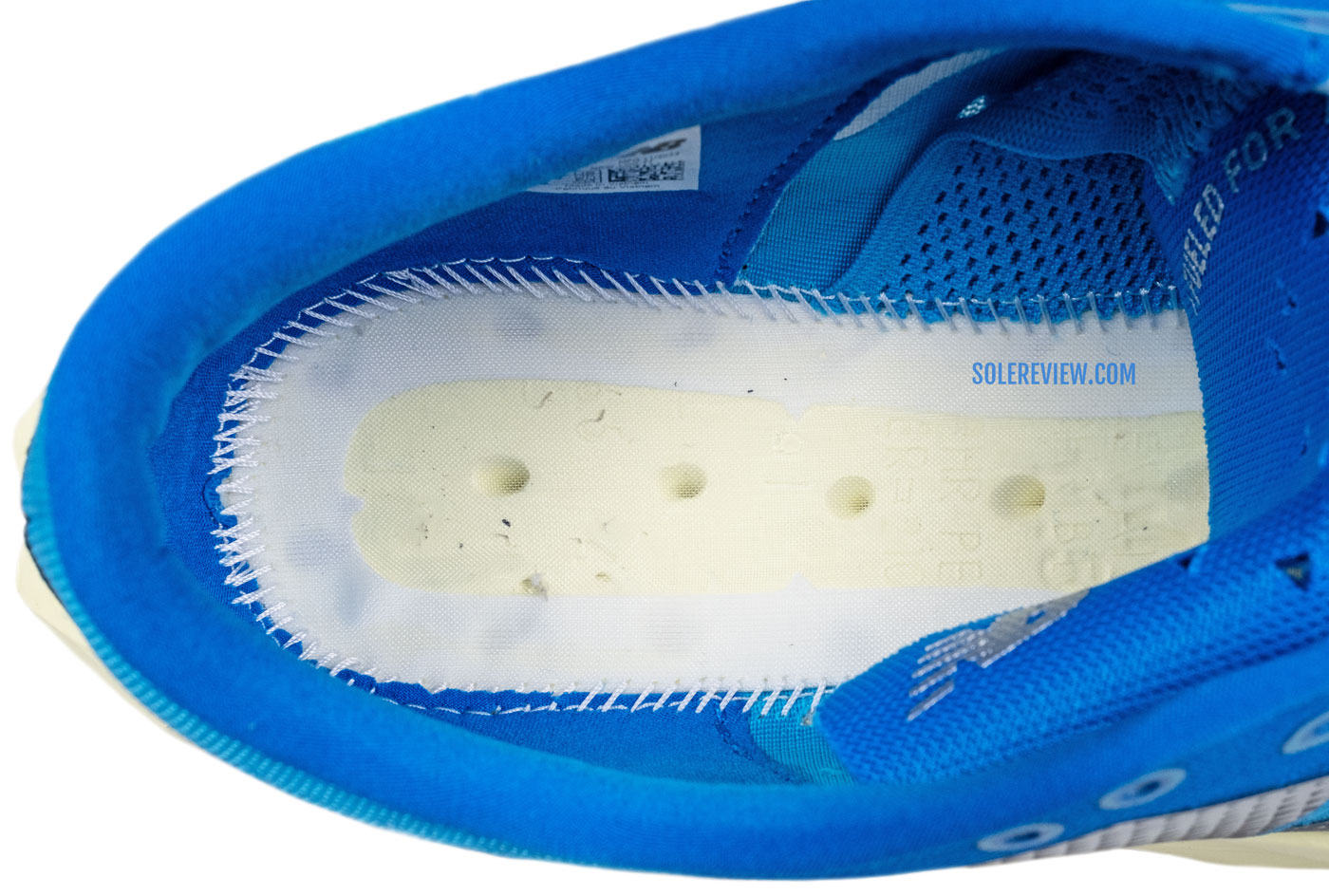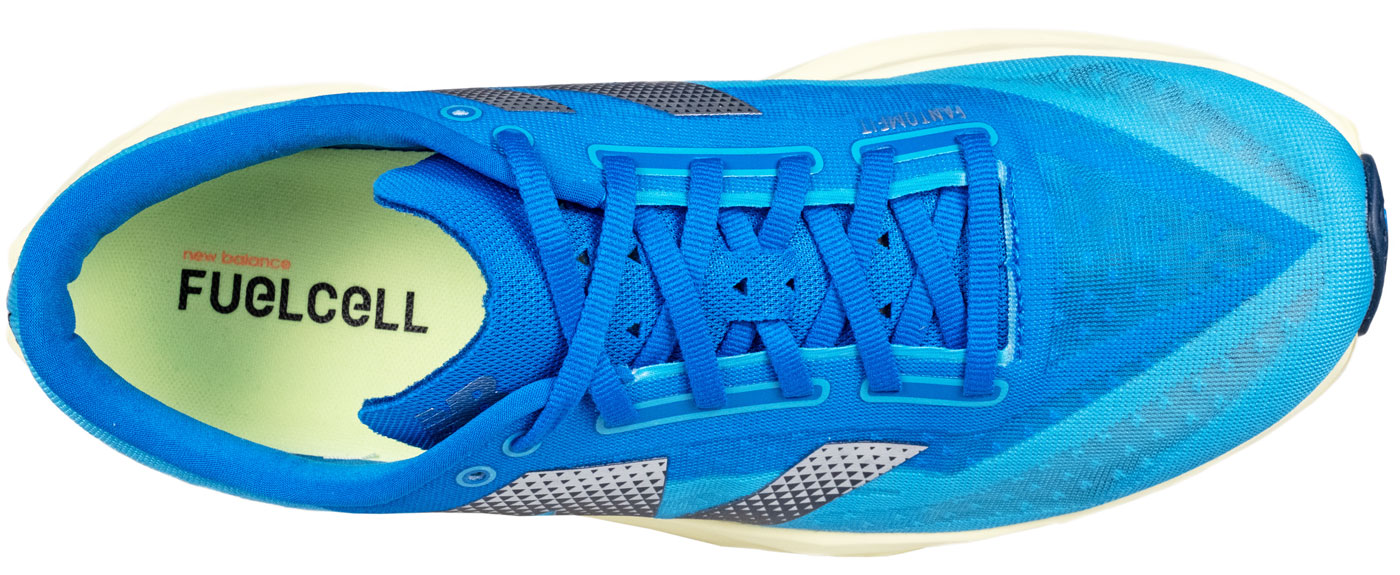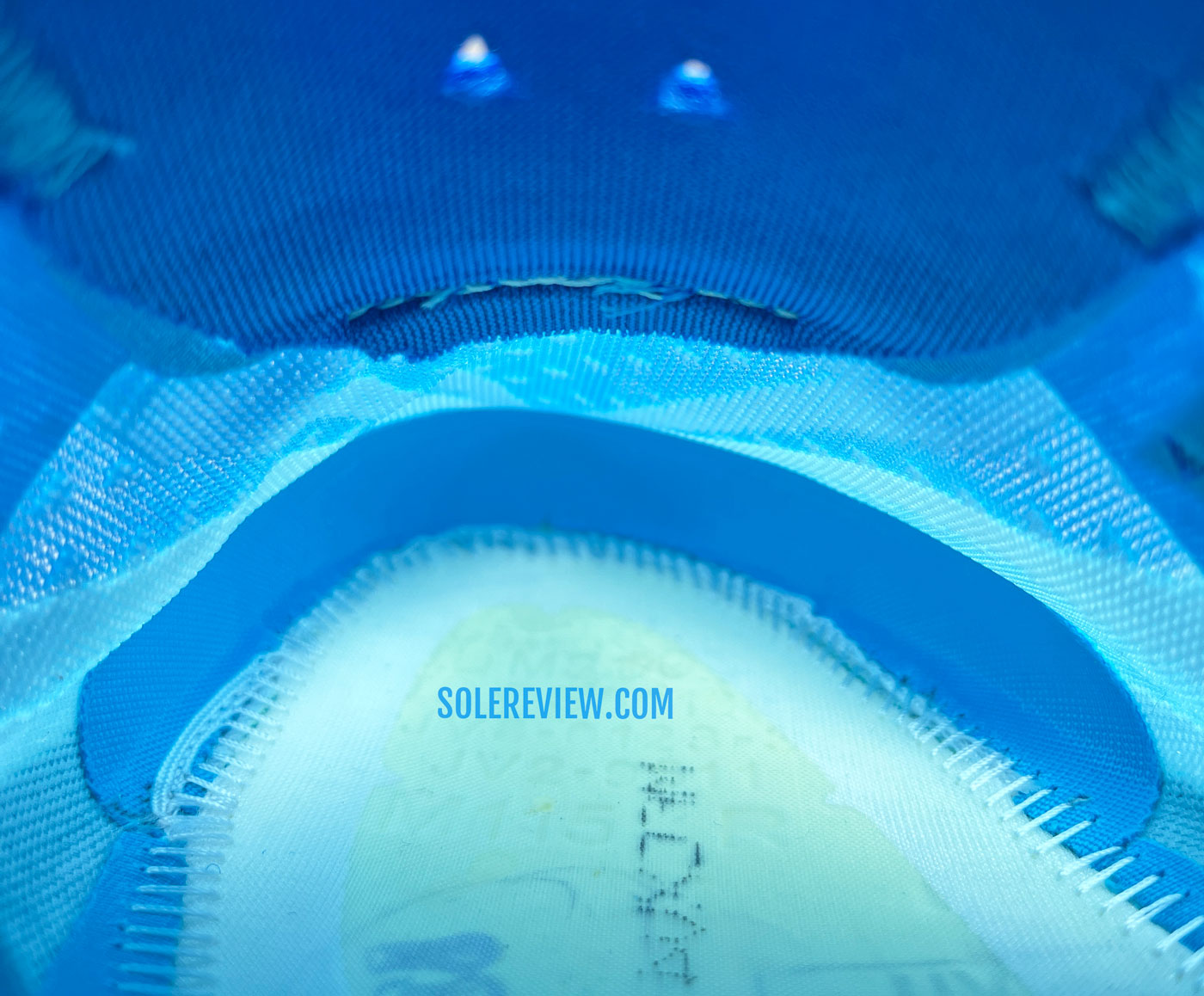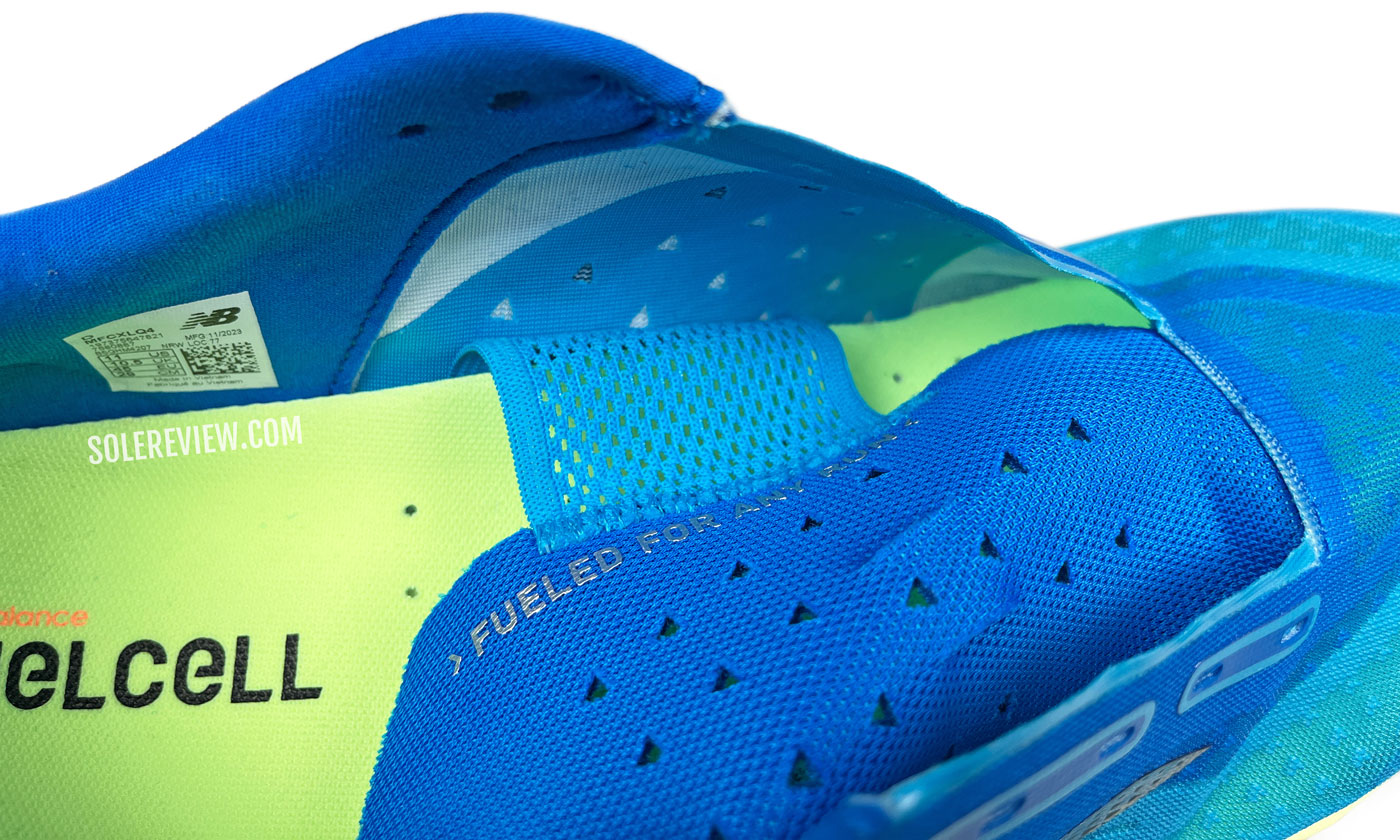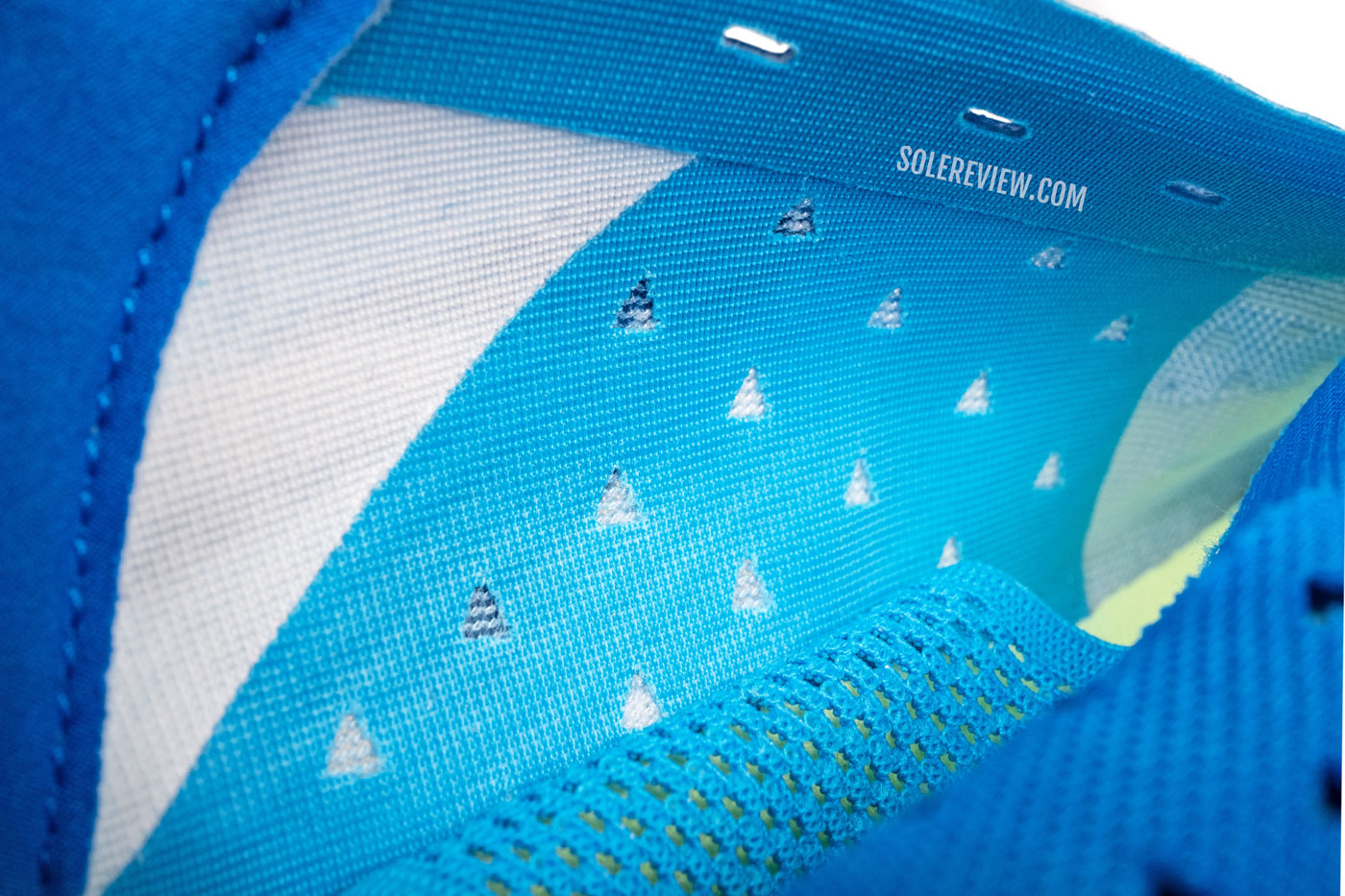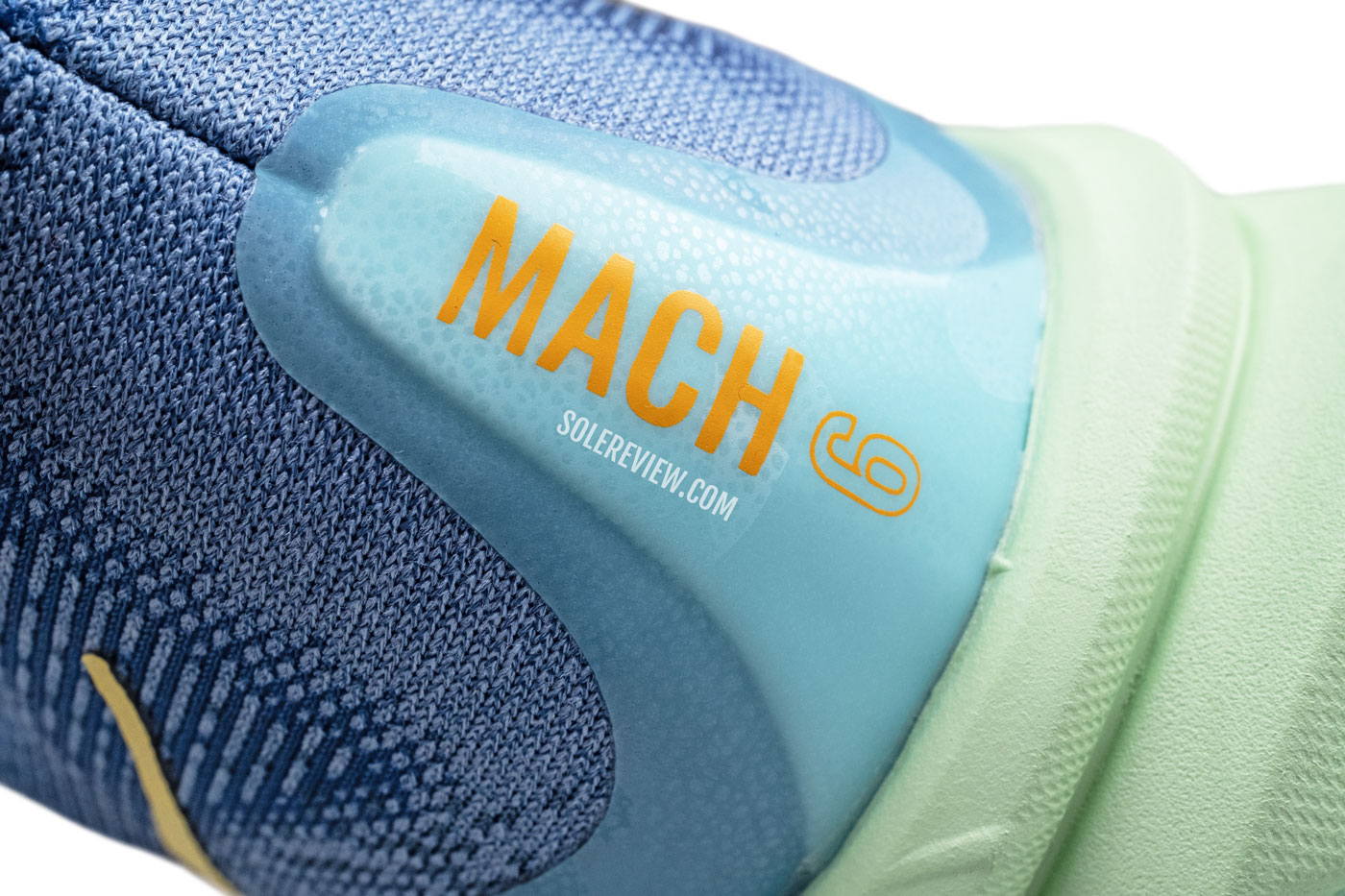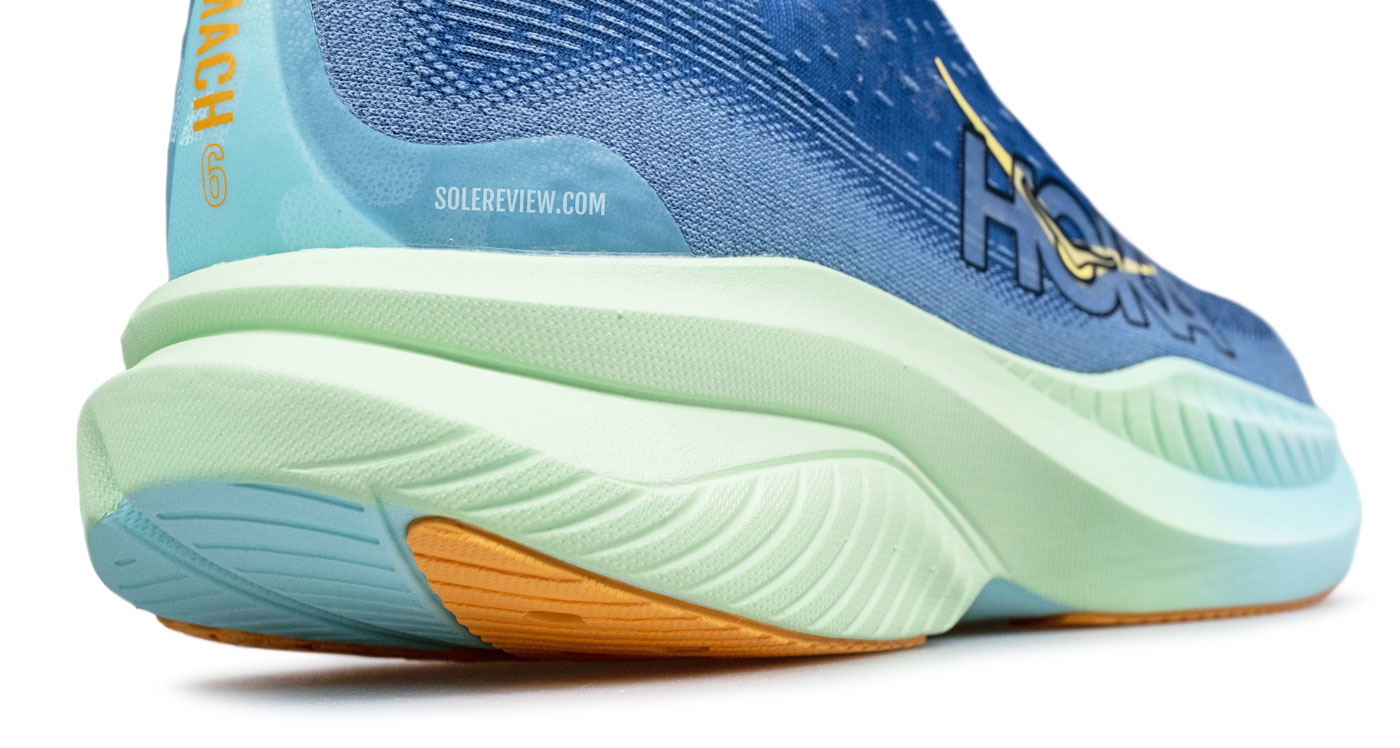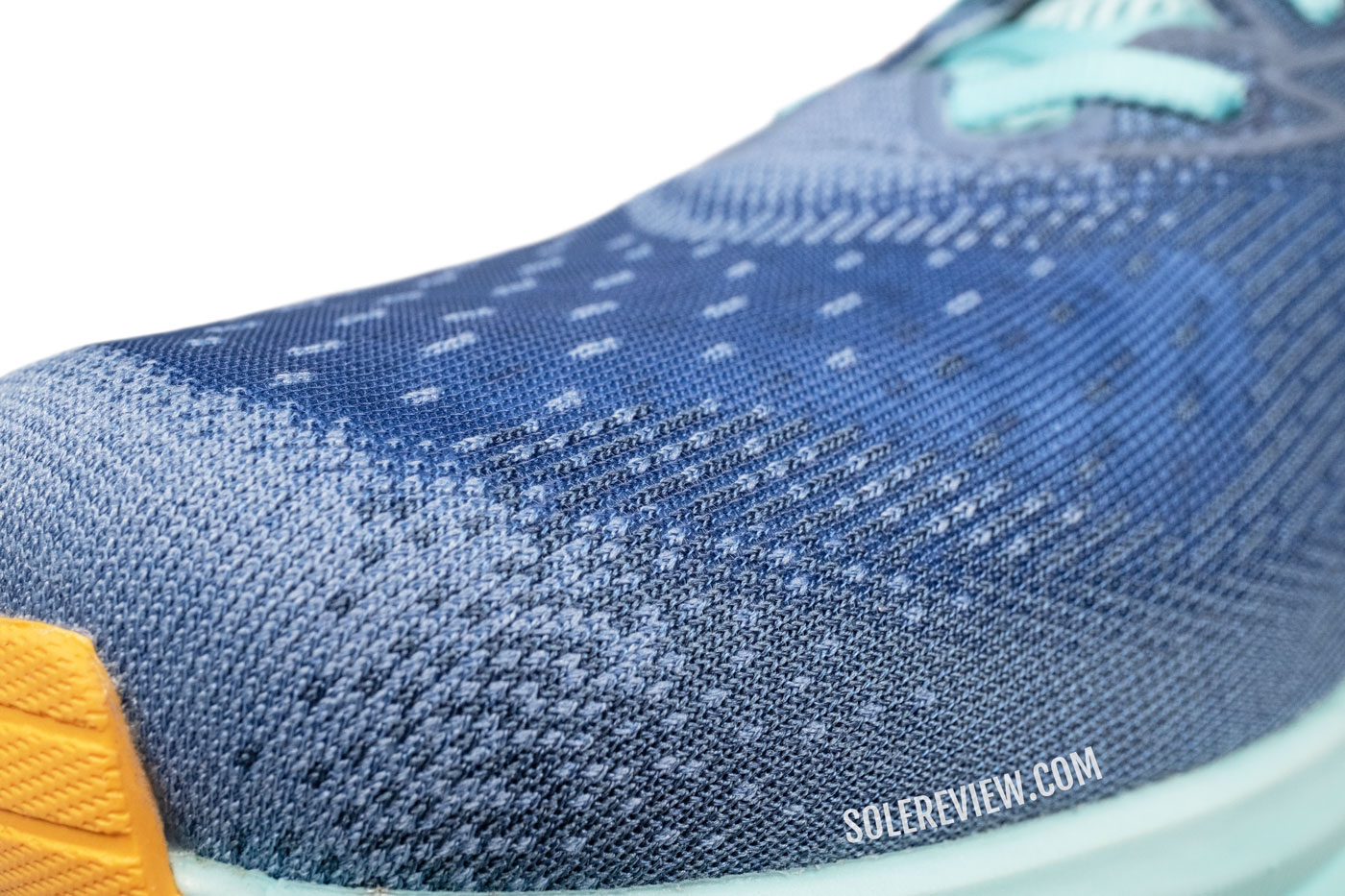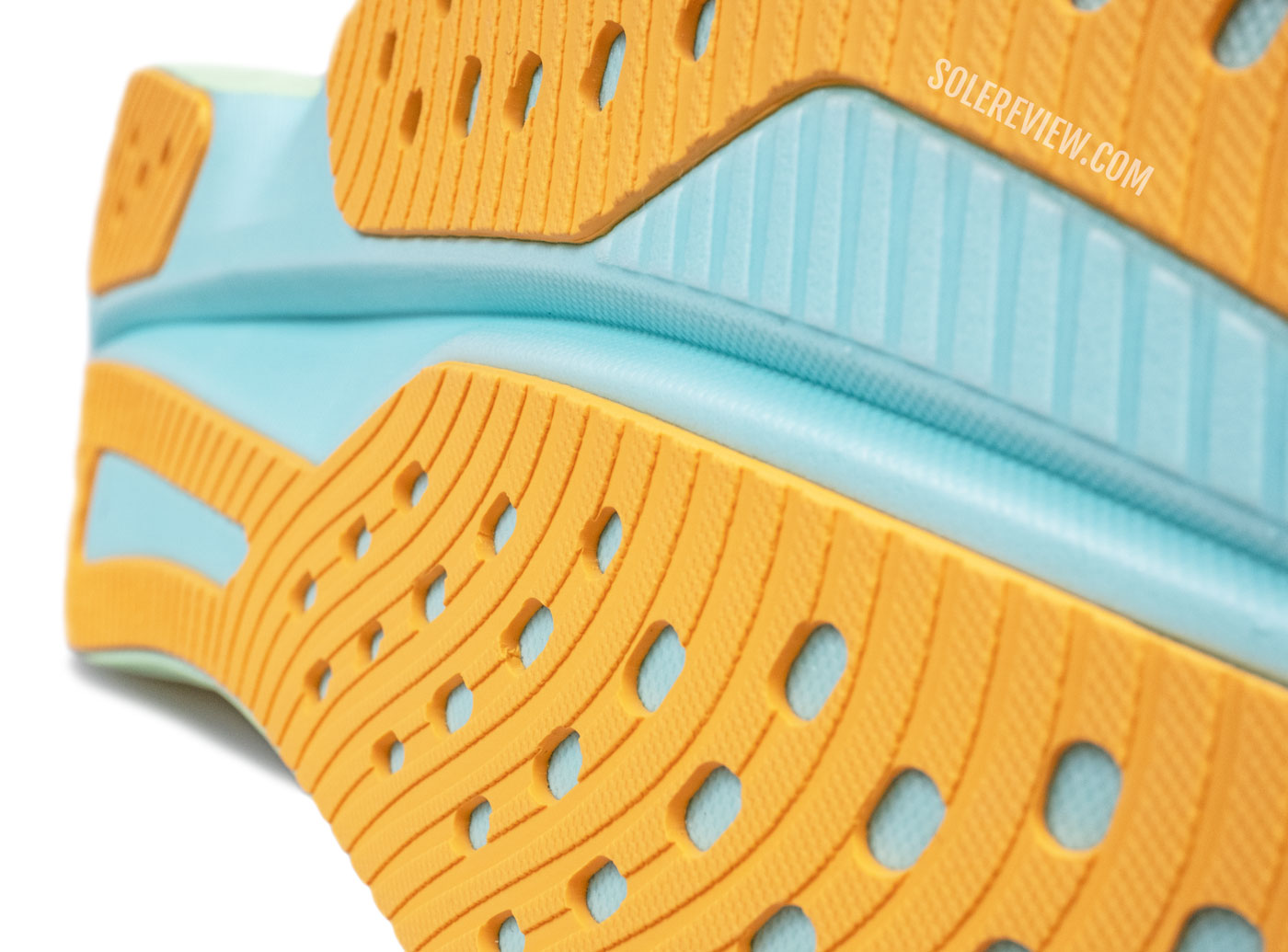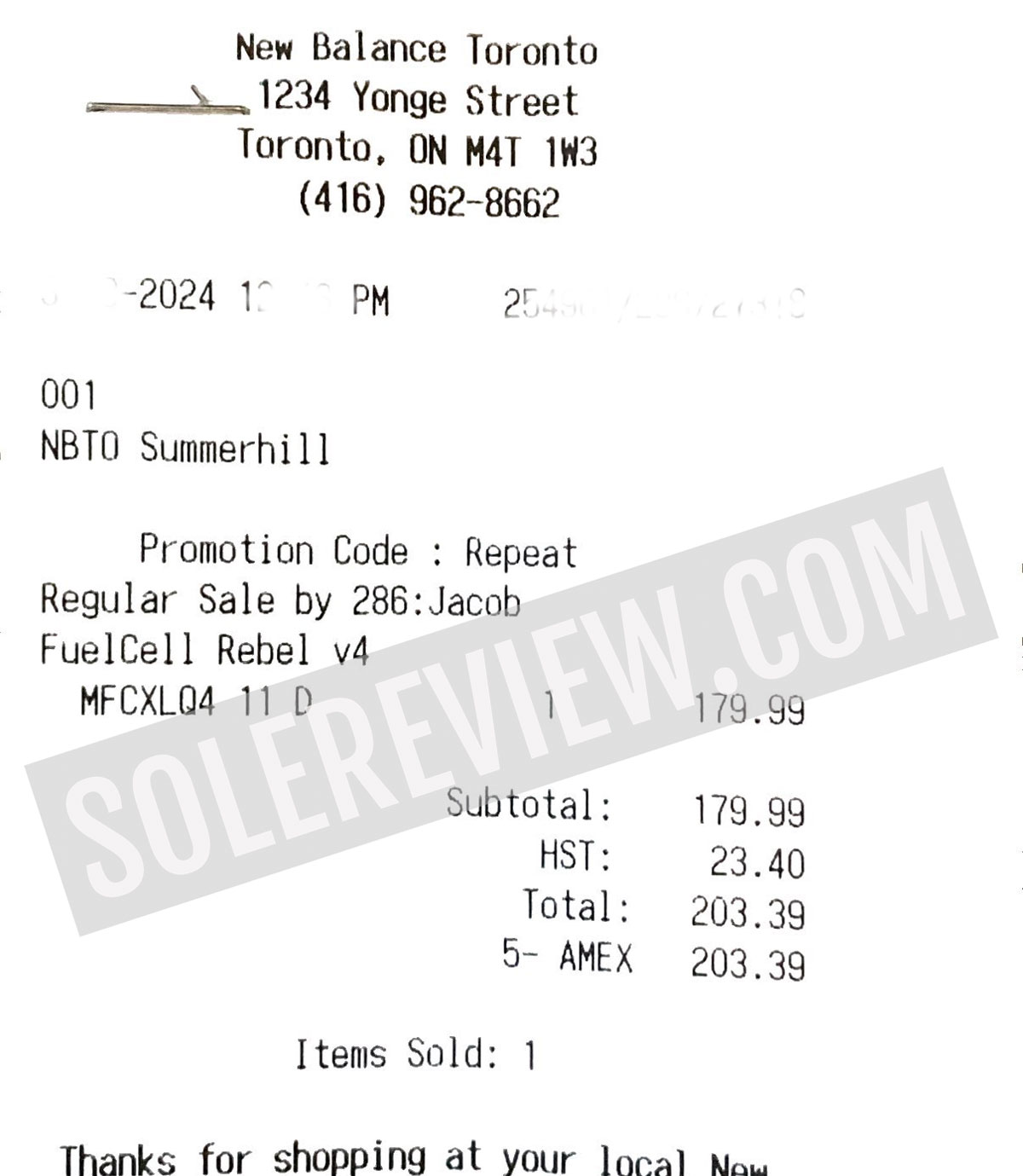
For this review, Solereview paid the full retail price for the New Balance Rebel V4. The amount is in Canadian Dollars.
In this review:
If you’re unfamiliar with last year’s Rebel 3, here’s the story so far:
In our review of the Rebel 3, we called it a modern-day Zante – an upgraded version of the popular 2014 trainer.
Like the Zante, the Rebel 3 was a tempo trainer for the purist. The soft and pliable midsole provided ample ride comfort for up to 10K, but let the foot do most of the work. There was no rocker or plate guiding the transition.
The soft and low-profile midsole also created the necessary contact area for the large toe to push off from. The toe was also located close to the midsole edge, thus making the toe-offs more effective.
Also, the form-fitting upper pinned the foot against the midsole for superior ground feedback. That also let the cushioned bounciness of Fuelcell foam be felt under the foot. The Rebel 3 was the ideal trainer for a 10K, and was a willing participant in tempo efforts, intervals, mile-repeats, and such. It was soft and springy, yet fast and efficient.
What’s more, the Rebel was one of the first sub $150 shoes in the market to use tech from its high-end racers – namely, the RC Elite and Fuelcell TC. While adidas has also deployed its premiere Lightstrike Pro foam in the adios and Boston, the midsole also contains the lower-tier Lightstrike EVA blend. Not so with the Rebel 2 and 3; the midsole was 100% Fuelcell foam.
The all-foam midsole and the lack of any propulsive features – like a pronounced rocker or plate – also made the Rebel 3 very user-friendly. You didn’t have to footstrike a certain way or run at a certain speed to take full advantage of the Rebel.
Not for nothing did we call the Fuelcell Rebel 3 a ‘stick shift’ version of a running shoe. It was a shoe that the runner had full control over, and not the other way around.
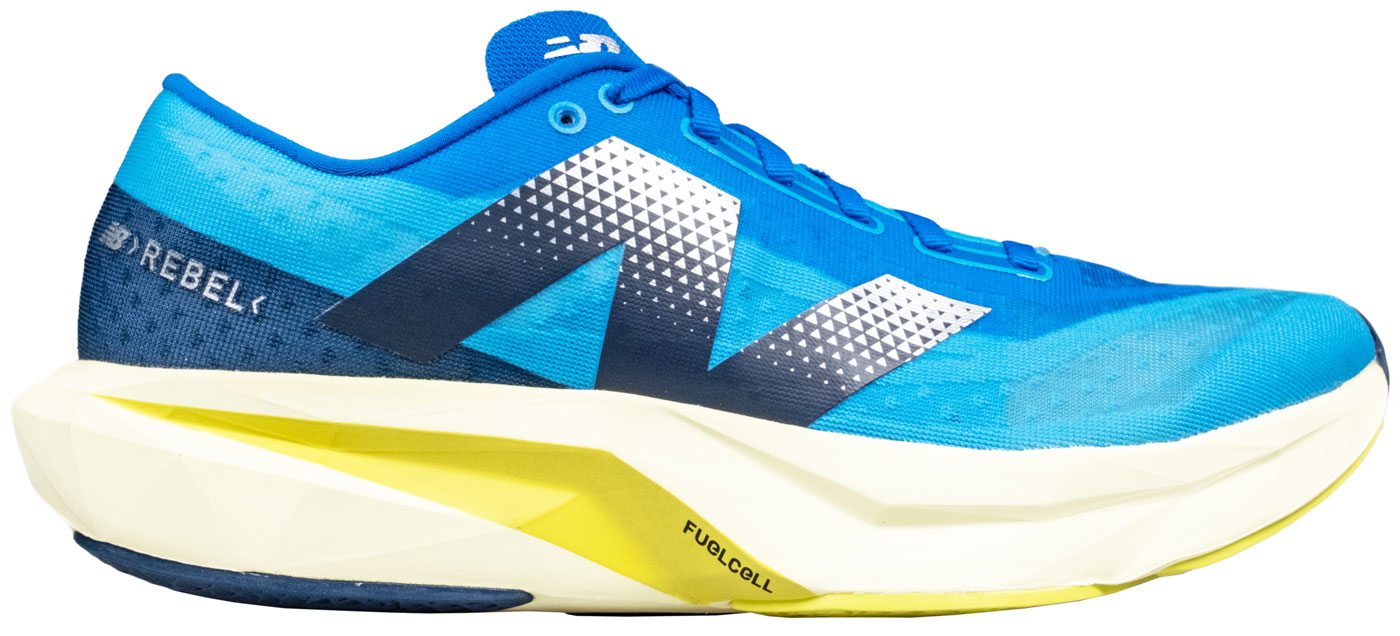
With the Rebel V4 comes a brand-new ride experience that bears scant resemblance to the previous-gen model.
You’ll probably like the Rebel 4 very much, but not for the same reasons you did the Rebel 3.
It’s also very likely that the Rebel V4 will find more takers than any past version of the series. Also, this isn’t an example of incremental evolution, but rather a leap to another form factor.
If the Rebel 3 was a modern-day Zante, the Rebel 4 is akin to a contemporary edition of the Beacon. The Fresh Foam Beacon, like the Zante, developed a loyal following – but for different reasons.
The Beacon was tempo run-friendly, but cushioned enough for everyday runs. Because of its thicker stack, the Beacon did not beat the feet up as much as the Zante did. The foot was still able to work through the Beacon’s thicker midsole during push-offs, but with a weaker proprioceptive feel than the Zante.
While some parallels exist between the Zante-Beacon comparison and the Rebel V3-V4 evolution, the Beacon was never supposed to be a direct replacement for the Zante.
On the other hand, the Rebel 4 directly succeeds the Rebel 3, so it’s natural for runners to have a certain expectation of how it’s supposed to perform.
Let’s begin with what hasn’t changed. Like the previous version, the Rebel V4 is excellent for threshold running. It’s also a half-decent (we’ll explain why) trainer for intervals, mile repeats, and workouts of that nature. The weight stays the same, give or take a few inconspicuous grams. The midsole cushioning packs ample comfort for 10K runs, and half-marathons are very doable too.
But that’s not the point of this review, is it? Everything on the Rebel 4 is new, so what matters more is just how different is this shoe from the Rebel 3? Are there areas where the Rebel V4 outperforms the V3, and vice versa?
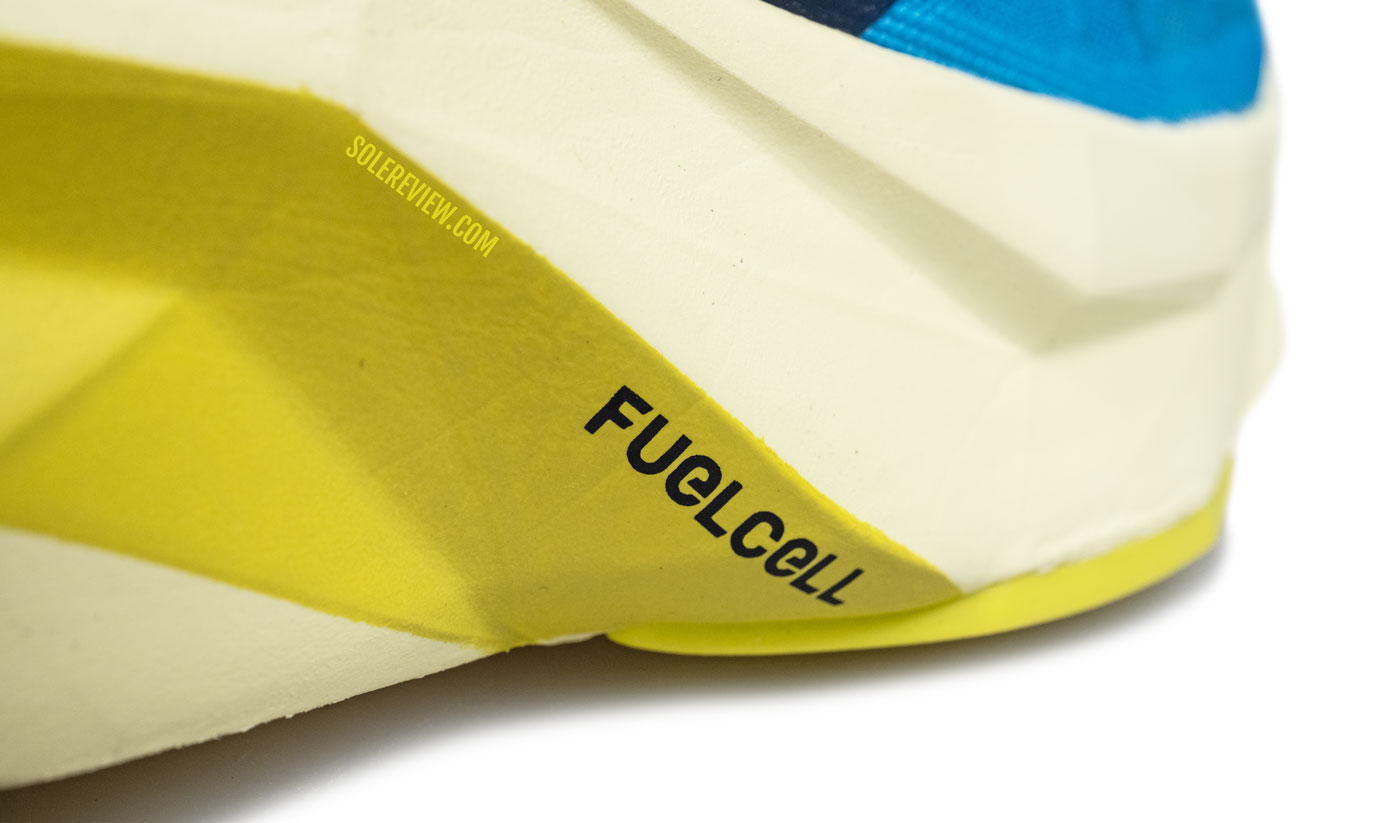
The PEBA-EVA foam blend is cushioned, but feels much flatter than the bouncy Fuelcell used on the V3.
The new PEBA foam-blend midsole is the Rebel V4’s highlight for a very good reason. Not only does the new foam change how the cushioning feels under the foot, but the wider and taller midsole also alters the Rebel’s ride in several ways.
One of the first things that’s noticed upon wearing the Rebel 4 is how planted the midsole feels. And there’re hard numbers to back that up – the V4’s midsole is 10 mm wider (up from 115 mm to 125 mm) under the forefoot and heel. The waist, or the midfoot, is also much wider.
The redesign process doesn’t stop there; the rear midsole sidewalls rise higher than they previously did. That way, the foot is seated lower in the midsole ‘cup’ when compared to the Rebel 3. The cushioning is very neutral; the sidewalls and heel bevel have a balanced design.
Finally, the new PEBA foam blend (presumably tossed together with EVA foam) is firmer than the original Fuelcell composition. Though there’s a sense of comfortable padding, it’s not particularly soft and bouncy during motion. The springy nature of the previous Fuelcell midsole was very noticeable. In contrast, the new Fuelcell foam feels flat.
The softness is more noticeable at walking speeds, and we believe this has to do with the new Fuelcell’s compression properties.
Add all these changes up, and it’s no surprise that the Rebel V4 ends up being fairly supportive at all running speeds.
There’s a huge upside in the overall stability over the Rebel 3, despite the midsole gaining 3 mm in stack height. At no point does it feel that the midsole is throwing you around, and that’s somewhat remarkable considering that the midsole heel has no negative space to center the weight.
Changing the midsole to this PEBA-blend compound has several interesting outcomes. While there’s this sense of deeper cushioning, it just feels flatter?
While most of us know that a loose-fitting upper dilutes the cushioning feedback (as is the case here), the new Fuelcell just behaves differently than the former Fuelcell.
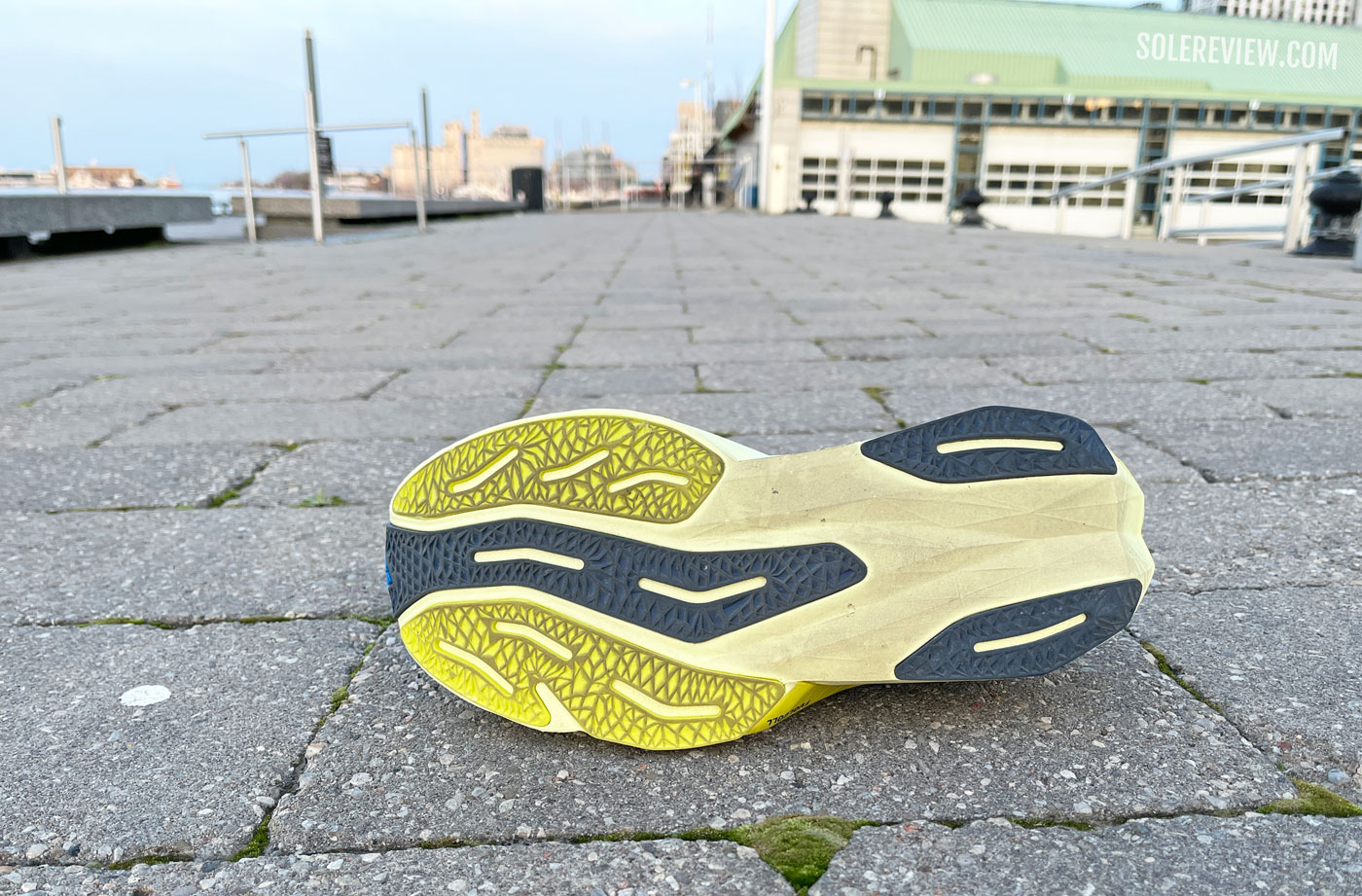
The new Rebel is more stable, but loses the bouncy feel in the process. The midsole also needs some to break in and become easier to flex.
The Rebel V4’s midsole foam appears to have a slight delay between compression and rebound. Meaning, that after loading, the foam seems to take a split second longer to return to its original shape. The foam appears durable, but is more prone to cosmetic creasing than before.
Based on published specs, the Rebel V4 gains 0.1 ounces over the V3. Our US 11 pairs suggest otherwise, and the Rebel V4 is actually lighter. That supports the theory that the new Fuelcell is a less dense – and flatter feeling – foam than the old Fuelcell.
In layman’s terms, the new Rebel 4 is less bouncy than the Rebel 3. The Rebel 2 and 3 were far from perfect, but they were more fun. The narrower upper fit had a midsole to match, so the shoe responded better to the effort applied. There were a few tradeoffs, like the momentary instability during some situations as well as the ‘bottoming’ of the midsole under heavy loads.
You won’t experience those shortcomings on the new Rebel.
The Rebel V4 may be a lesser shoe for harder efforts like intervals and such, but it remains very enjoyable. It disappears over the foot in a way few others do. The PEBA-blend midsole feels weightless, and so does the thin and spacious exterior.
Even with cushioned socks, the difference in the upper fit between the Rebel 4, and say, the Hoka Mach 6, is telling. You can feel the effective snugness of the Mach 6’s upper pinning the foot against the midsole.
Here, the foot is secured but in a non-distracting way. There are no hot spots or heel slippage; the breathable upper vanishes over the foot.
Considering all that’s changed, what would the Rebel V4’s ideal use case be?
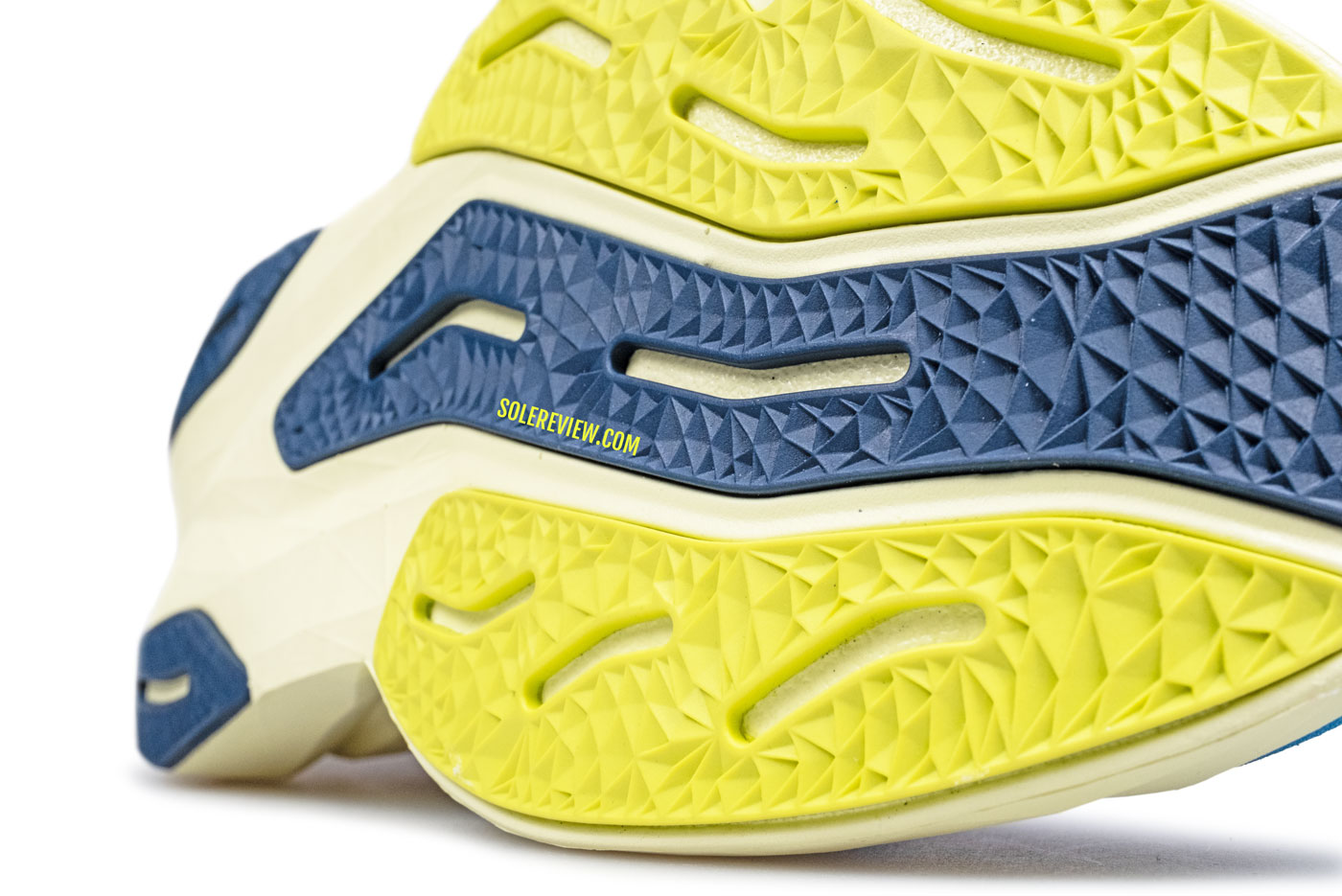
The changed midsole ride makes it less suited for intense efforts, but it continues to be a capable tempo trainer.
It’s a very nice running shoe for tempo training and steady-state runs up to 10K.
The just-right softness of the lightweight Fuelcell midsole is good at holding a pace, and the outsole provides sufficient coverage and grip for efficient turnovers. The midsole width, beveled heel, and the 6 mm offset work for all footstrike orientations.
The Fuelcell midsole won’t run out of comfort during a half, but it can get a little boring over that distance. For cushioned alternatives, consider the Novablast 4 or even the Superblast to add more comfort as well as transition assistance from the midsole rocker.
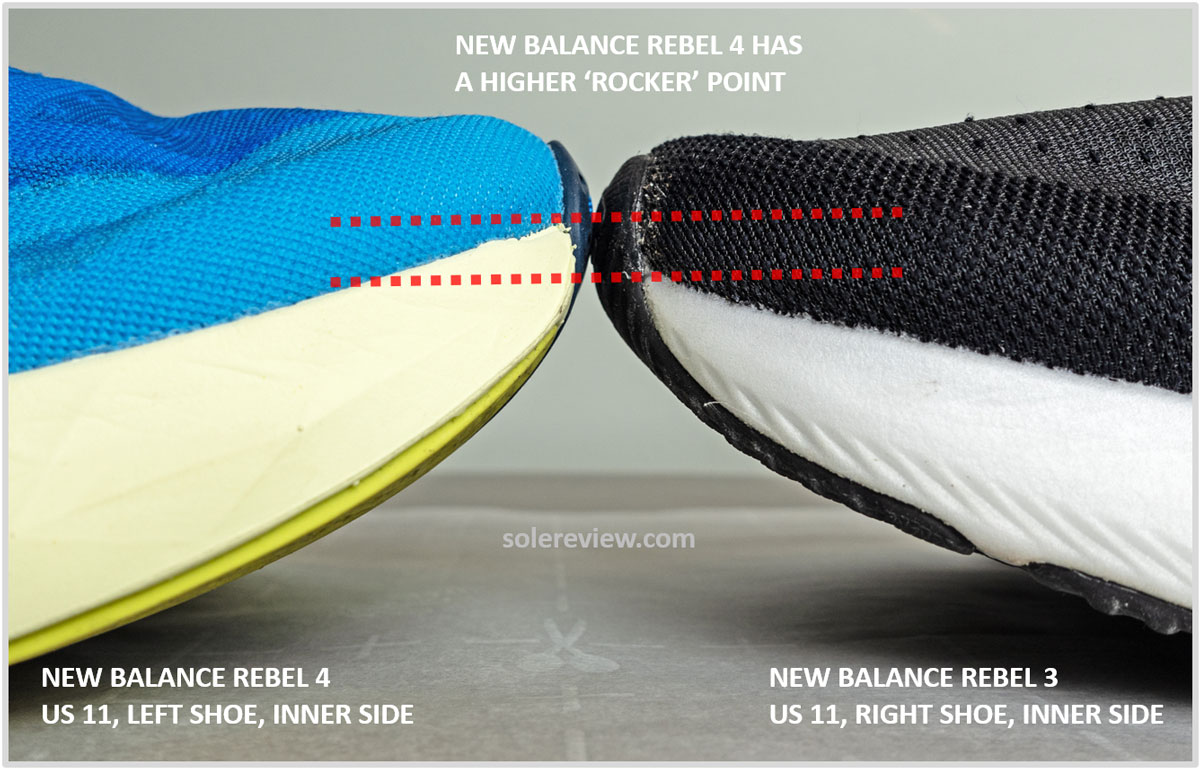
When compared side-by-side, the Rebel V4’s tallest point measures higher than the Rebel 3. That said, the rocker effect is negligible once the midsole has broken in.
Does the Rebel V4 have a rocker midsole?
At first, it seemed like it. The V4’s highest point of the rocker is 7 mm taller than the V3. But the Rebel V4’s midsole breaks in after 20 ~ 30 km, and with that comes a shift in the ride dynamics.
On day zero, the forefoot is stiff and inflexible – which is both a function of the taller foam block and yet-to-be-stretched outsole. But it takes just a few runs to change that. On day four, the forefoot and outsole become far easier to bend – the rocker effect, if there was any to begin with, is barely noticed.
As the so-called ‘rocker’ mellows, it becomes easier to spread out the midsole to create a wider contact area.
On the other hand, intervals or any workout with segments of all-out effort demands a lot of this shoe. The spacious forefoot fit dilutes the focus under hard stop-start conditions, with the midsole feeling slappy at times. The new midsole lacks the tactile feedback of the Rebel 3.
The wider midsole also makes fully engaging the large toe more challenging. On the Rebel V3, the big toe was positioned closer to the midsole edge. On the V4, the toe has plenty of midsole under it, so it’s harder to fully direct the power to the push-off process.
Besides, not only was the Rebel 3’s midsole less tall, but the outsole had a split design under the toe-box for a greater range of movement.
Here’s a hypothetical question: can something be done to make the Rebel V4 a better shoe for ‘all-out’ workouts, as well as make the cushioning bouncier?
It is possible to improve the Rebel V4’s cushioning responsiveness by changing the footbed. The role of an insole in a midsole’s ride character is vastly underestimated; it can make or break a shoe’s ride.
After all, the footbed is the first point of contact, and it is as much a part of the midsole as the core stack. The stock footbed provides the bare minimum of step-in softness, and that’s par for shoes from this niche.
Here’s a little experiment for everyone to try at home. Borrow the insole from the Novablast (3 or 4) or a similar insole with the same material (smooth EVA) and thickness.
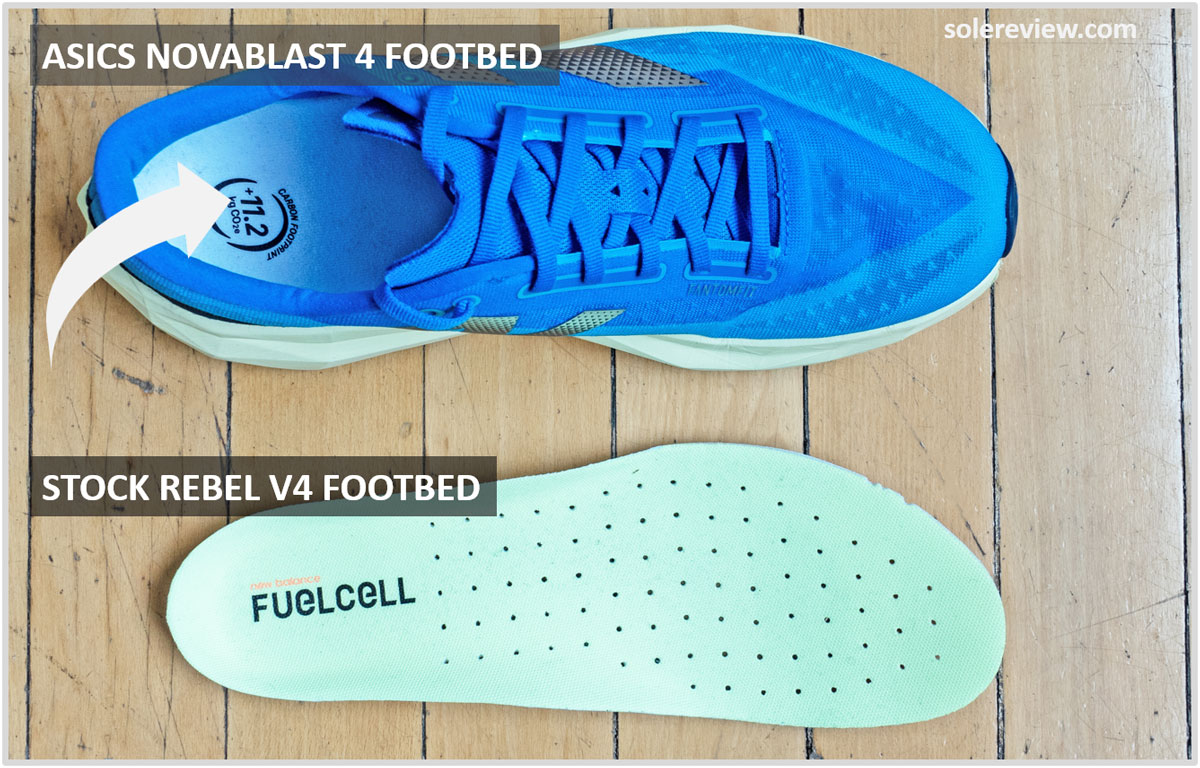
For a higher level of cushioning responsiveness, simply swap the thin footbed with a thicker one. Like the insole from the Novablast 4, for example.
Pop one into the Rebel, and just like that, you have a brand-new ride character.
If New Balance were to keep the Rebel 4’s midsole the same but swap the thin footbed for a chunkier Novablast-type insole, the internet would be inundated with reviews of a ‘bouncier’ Fuelcell midsole – that’s how much influence a footbed has.
A thicker footbed also improves the upper lockdown, which in turn, translates into better power transfer to the midsole.
Much has already been said about the lightweight and spacious upper, but there’s more.
The wider midsole flares outwards on the side of the large toe. This makes the large toe feel as if it’s in the center of the toe box. That also creates a sense of shallowness that wasn’t noticed on the Rebel 3.
That said, this isn’t noticeable when running – except for the big toe’s diminished capacity to push off. As for stick length, we recommend going true to size.
While the spacious upper makes the shoe comfortable and distraction-free, it’s very hard to achieve a speed-friendly lockdown.
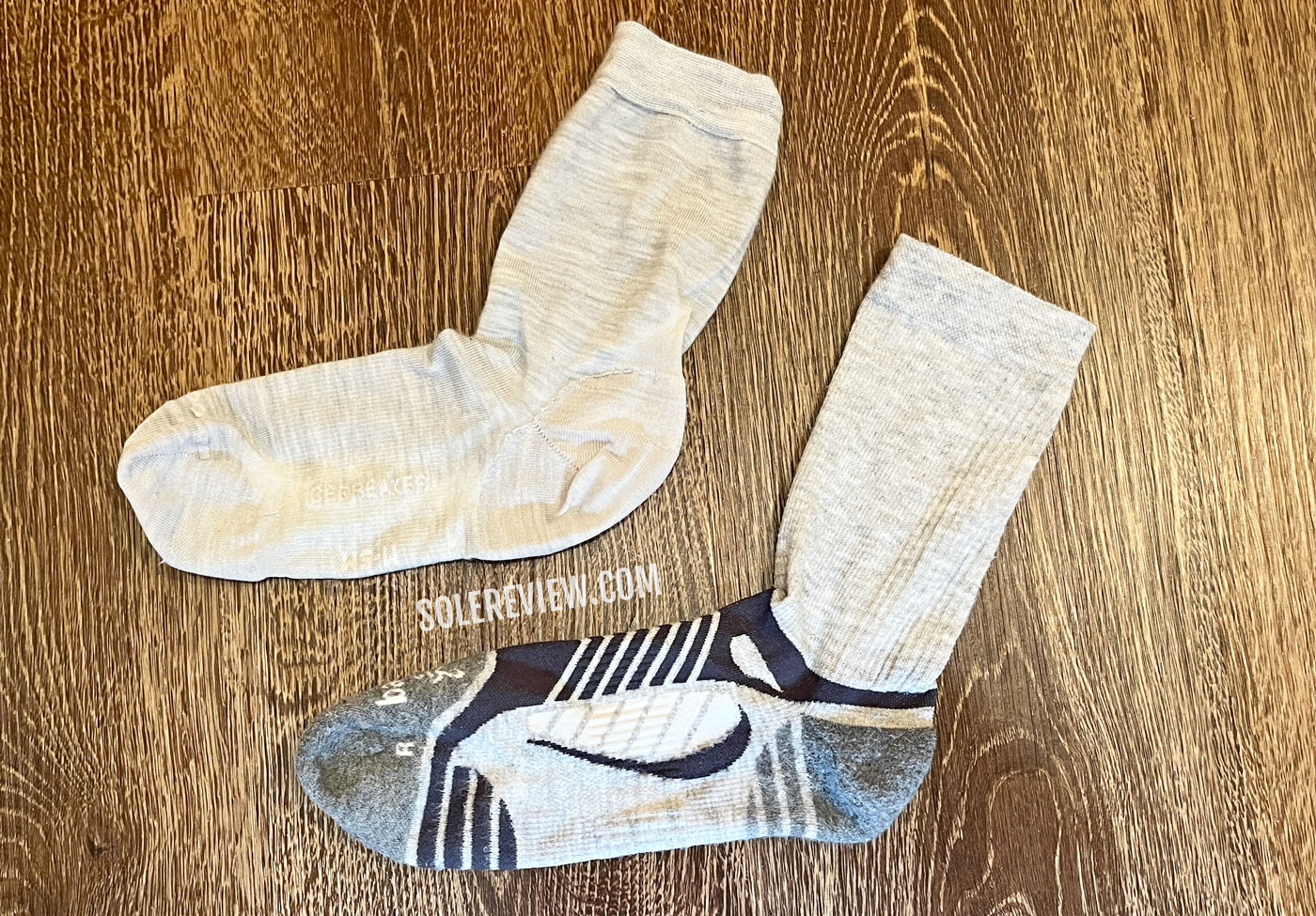
There’s no question about it – wear a pair of thicker/cushioned socks to counter the Rebel V4’s spacious interior.
There’s always some unwanted space – not only on the sides, but on the top as well. We recommend wearing the Rebel 4 with cushioned socks, or else the foot will be swimming inside the shoe. In particular, narrow-footed runners will struggle to dial in the fit.
The Rebel V4 is also sold in an optional 2E (wide) fit, but we reckon most runners won’t be needing it.
As usual, the redesigned heel appears to be causing the loose fit. The Rebel 3 had a (more) aggressive heel fit as well as plumper padding. The Rebel V4 shaves off some of the foam filling, while also getting rid of the Achilles lip.
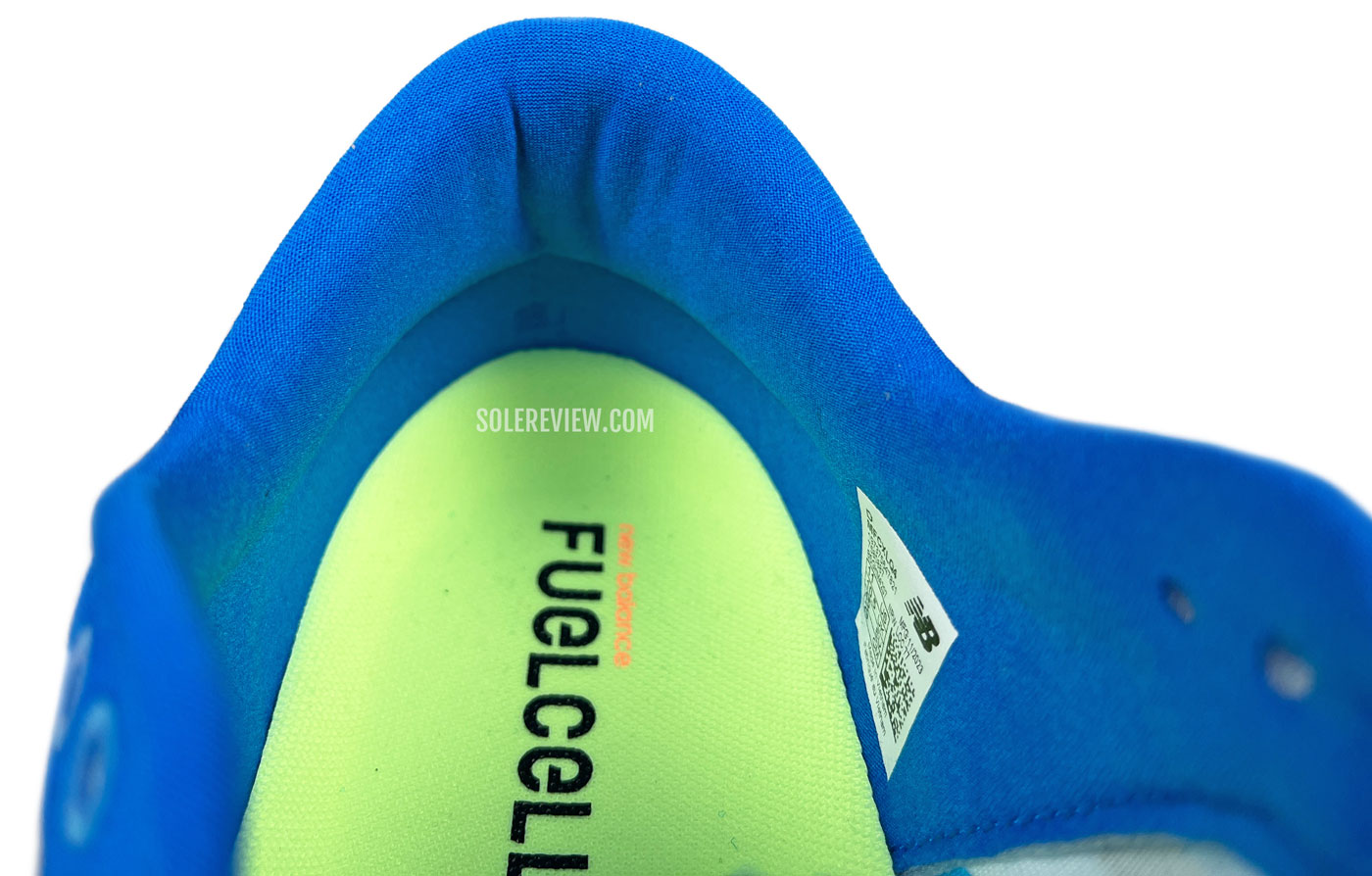
The heel collar is softer and has a less aggressive hold. It also has the effect of moving the foot a few mm towards the rear. This creates the excessively roomy forefoot we so described.
The leaner heel collar shifts the foot’s position a few millimeters towards the heel. And guess what happens next? An equal amount of space is created in the toe box and forefoot.
This heel-moving-the-foot-backward happens with alarming regularity, and we’re very surprised that shoe brands haven’t caught on yet.
Very recently, the Asics Novablast 4 and Novablast 3 went through a similar change. Our picture compares the heel padding curvature of both versions, and how it affects the fit.
The V4’s lacing begins sooner on the forefoot than before, but that doesn’t seem to make a difference in the level of fit security.
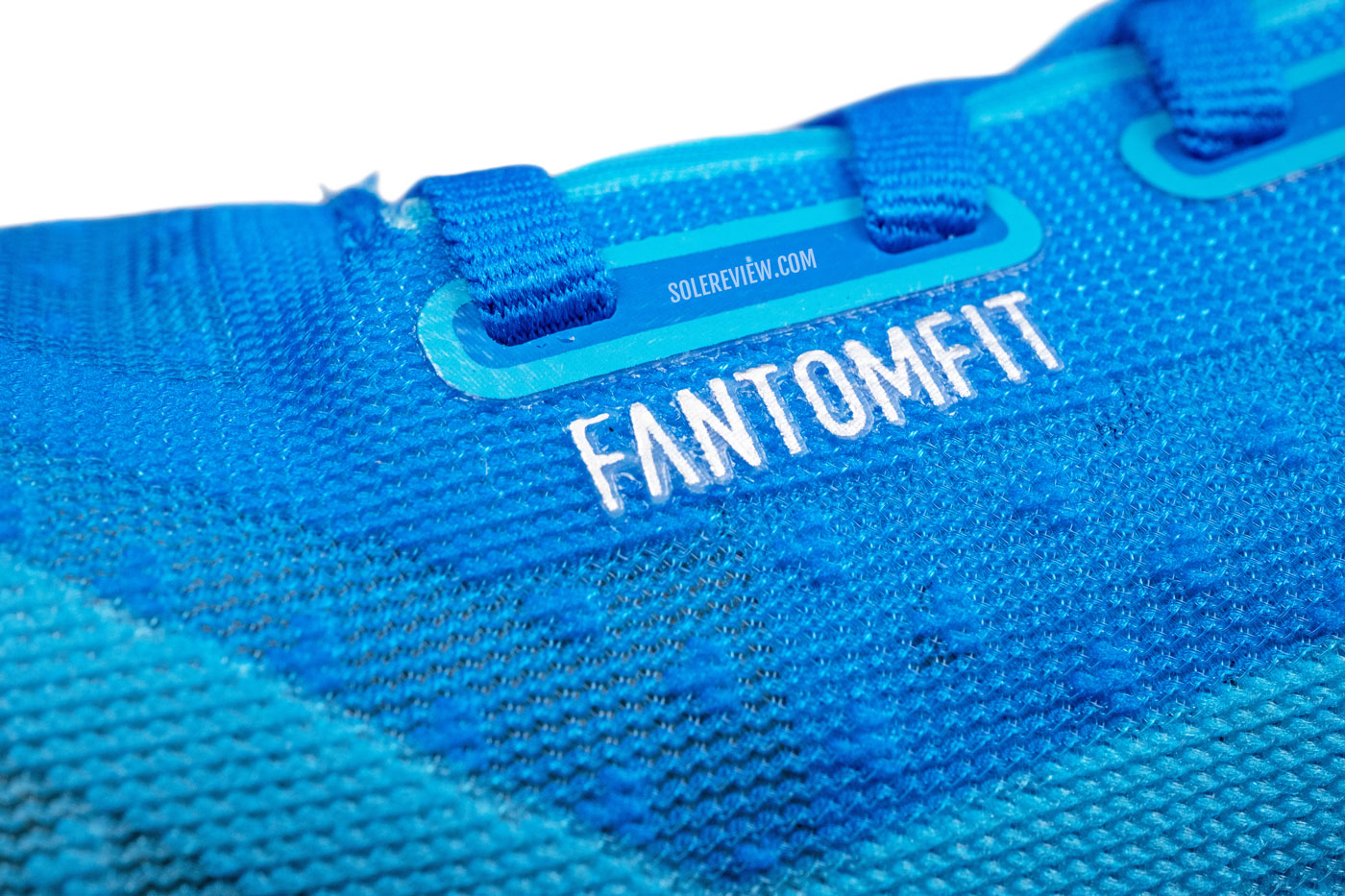
Fantomfit – New Balance’s term for a lightweight upper with minimal layering. We first came across this word on the 2015 New Balance 1500V1.
The lacing is closer (shorter distance between the opposing eyelets) so that also makes the cinching less effective than the Rebel 3. This – and the excess room – are a couple of design-related rough spots that need to be sanded down.
The lack of padding in the tongue is compensated by the slightly spongy spacer mesh. The thin and soft laces (of a stretchy variety) do their part in keeping the top-down lacing pressure low. The tongue is held down over the foot by a pair of elasticated gussets.
New Balance has taken lessons from the reported failures of the Rebel 2’s fragile midfoot mesh, and has reinforced the midfoot. With the updated construction, it is highly unlikely we’ll see mesh failures under the arch.
Runners who run in the early and late hours of the day will miss the Rebel 3’s very reflective heel counter; the Rebel V4 has no low-light visibility elements.
THE NEW BALANCE REBEL V4 COMPARED WITH HOKA MACH 6
This review would only be half complete if we didn’t compare the New Balance Rebel V4 with the Hoka Mach 6. Both models have gone through an extensive redesign process and have been released around the same time, so which should you buy?
Historically, the Rebel and Mach have appealed to runners with a similar ask – which was to find a lightweight shoe that was fast, yet comfortable.
Both shoes do that well, except that how the Rebel and Mach go about their business is very different. The Hoka Mach 6 is nearly an ounce heavier, 3-4 mm taller, and has a much firmer ride.
The Mach 6’s upper also fits considerably tighter than the Rebel V4. It’s a capable tempo trainer but a very robust and serious one.
Despite the taller stack and weight disadvantage over the Rebel, the Mach 6 comes across as a better shoe for harder efforts such as interval training.
The tight upper ensures that the foot doesn’t budge, and the firmer midsole feels more efficient during quick landings and push-offs. The deep channel and generous outsole coverage also assist with quick transitions.
In comparison, the Rebel 4’s breezy upper and softer PEBA blend midsole feels like slipping into a pair of Pyjamas. The upper is nowhere as snug as the Mach 6, so it’s hard to match the foot-to-midsole power delivery of the Mach 6.
Where the Rebel 4 scores over the Mach 6 is its lightweight, vanish-over-the-foot feel that the Mach 6 struggles to replicate. More to follow in our detailed review of the Mach 6.
Do you own this shoe? Improve this review by sharing your insights.

